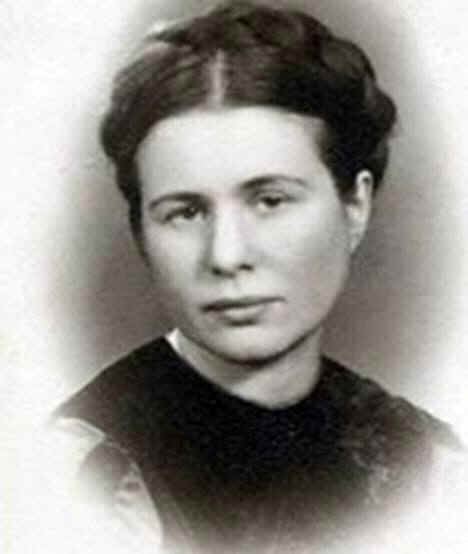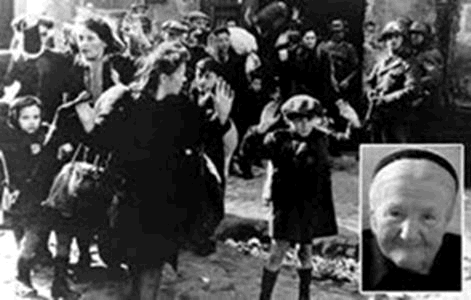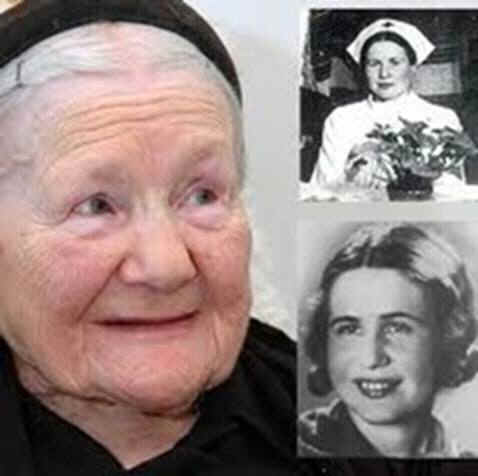|
NEWSPAPER TREE
Monday,
December 9, 2013
Blowout
at UT El Paso
View from Parnassus—forty years in the vineyards of the muses
By
Felipe de Ortego y Gasca
Philip.Ortego@WNMU.EDU
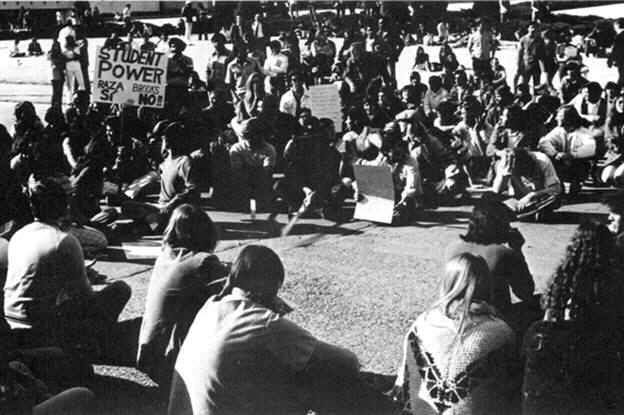
Chicano
students at UTEP stage a protest and takeover of the administration
building in 1971.
(Courtesy of The Flowsheet/University of Texas at El Paso)
Hard
to believe that 43 years ago (1970) I arrived on the campus of the
University of Texas at El Paso as founding director of the Chicano
Studies program. That happened because of Dr. Ray Small, who was then
Dean of Arts and Sciences, a mentor and friend of mine, and the Chicano
students of MEChA who took a chance on me.
That
spring I was finishing up my dissertation in English at the University
of New Mexico (UNM) in Albuquerque, on leave from New Mexico State
University in Las Cruces where I had been a member of the English
Department from 1964 to 1970. During the summer of 1969 and the academic
year 1969-1970, I was a teaching fellow in the English Department at UNM.
At
this point I should mention that in 1964, I went to Las Cruces from El
Paso where I had been the French teacher at Jefferson High School—la
Jeff. Fifty years ago, securing a position as a mejicano to teach
English in the El Paso public schools was nigh impossible. Most people
thought we spoke a corrupt version of Spanish and an equally corrupt
version of English alternating between Spanish and English referred to
as Spanglish and/or Tex-Mex.
As
a throw-away line, Hibbard Polk, assistant superintendent of the El Paso
Independent School District, asked if I could teach French. Not
expecting my response, I said, “Sure,” and explained that I had
learned French at the University of Pittsburgh where I had studied from
1948 to 1952 on the G.I. Bill. Moreover, I added, I had lived in France
from 1955 to 1958 where I had sharpened my fluency in the language. Much
to the delight of Maria Esman (Barker) I was hired. Maria was then
coordinator of foreign language instruction for the school district.
In
February of 1970, Ray Small inquired if I’d be interested in applying
for a teaching position in English with additional duties in organizing
a Chicano Studies program. Loathe as I was to leave New Mexico State
University after six years there, I said “yes,” particularly after
working with the Chicano Studies program at the University of New Mexico
during the 1969-70 academic year under the directorship of Louis
Bransford, founding director of Chicano Studies there.
It
was Louis Bransford, after all, who had asked me in August of 1969 to
organize a Chicano literature course for the Chicano Studies program,
which I did.
It
turned out that was the first course in Chicano literature in the
country—or so I have believed. Switching from a dissertation on
Chaucer to one in Chicano literature, my dissertation on “Backgrounds
of Mexican American Literature” was the first study in the field. I
was also the first mejicano to earn the Ph.D. in English at UNM. I
became cognizant of all this much later.
In
April of 1970, Ray Small informed me I was a finalist for the position
he had described, and invited me to UT El Paso for an interview. What an
interview that was! The faculty of the English department greeted me
luke-warmly, though I knew most of them. I was not prepared for the
grueling interview by the MEChA students. Mistakenly—or perhaps
pompously—I assumed that my growing reputation as a writer and scholar
in Chicano literature would carry the day for me.
I
was not only publishing well on the English and American canon of
writers (Chaucer, Shakespeare, Melville, Steinbeck, and other literary
luminaries), but also publishing well in Chicano literature and public
affairs.
My
piece on “Montezuma’s Children” was published as a cover story in The
Center Magazine of the John Maynard Hutchins Center for the Study
of Democratic Institutions and was entered into the Congressional record
by Senator Ralph Yarborough who recommended it for a Pulitzer. The piece
received a John Maynard Hutchins Award for distinguished journalism.
My
piece on “Schools for Mexican Americans” was published in the Saturday
Review. I was heralded as a Quinto Sol writer and author of numerous
short stories like “The Coming of Zamora.” In 1967, I was recipient
of the NEA-Readers Digest Foundation Award for fiction. In March of
1970, the Center for Applied Linguistics in Washington, D.C. had
published my monograph on “The Linguistic Imperative in Teaching
English to Speakers of Other Languages.” Other pieces of mine had
appeared in The Nation magazine. I was feeling secure as an
emerging scholar and writer.
My
interview with the MEChA students was like my interrogations of
Strategic Air Command pilots
at the Air Force Survival School in the isolated high desert of Reno,
Nevada, during my ten years with the Air Force.
The
MEChA students were determined to peel away any layers of inauthenticity
in their search for the real Felipe Ortego. Having been a World War II
Marine in the Pacific, I was not intimidated by the students. In fact,
my admiration for them grew larger as they pressed on with the
interview.
They
got to the ideological nub of my commitment to the Chicano Movement.
Satisfied, they settled on me. To this day, I don’t know who the other
finalists were. But the confidence of the MEChA students in choosing me
to be founding director of Chicano Studies at UT El Paso changed my
life.
I
settled in as Founding Director of Chicano Studies at UT El Paso on
August 15, 1970, and began immediately on the proposal to the UT Board
of Regents and the Texas Commission on Higher Education to establish the
Chicano Studies program at UTEP. Helping me were MEChA students and
Mario and Richard Garcia, both of whom had finished their graduate work
at UTEP and bound for Ph.D.’s elsewhere.
With
my appointment in the English Department and that of Santiago Rodriguez
in social work, the Chicano faculty at UT El Paso doubled. On board
already were Norma Hernandez in education and Jesus Provencio in
mathematics. There were other Hispanic faculty on campus who were not
Chicanos, that is, Mexican Americans.
Of
the Chicanos, we were four in number, not counting Pete Duarte who was a
graduate student in sociology. Important to note: it only took three
Russians to foment the Bolshevik Revolution. The Chicano Studies program
was housed in Graham Hall, second floor. My appointment was jointly in
English and Chicano Studies.
I’m
loathe to recount a humorous incident that occurred that fall when I
went to the registrar’s office to pick up rosters for my classes.
Dressed in the mufti of campesinos, no sooner had I entered the
registrar’s office when pointing at me the registrar herself bellowed
that the wastebaskets in the various offices had to be emptied. Non-plussed
I explained that I was professor Ortego coming in to pick up the rosters
for my classes, whereupon the registrar bellowed: “You’re a
professor?” Adding: “What’s your name?” “Ortego,” I said.
“Ortega,” she said. “No, Ortego,” I repeated emphatically.
She
rifled through some papers and handed me the rosters to my classes. I
nodded, grabbed the papers and sauntered nonchalantly out of the
building without closing the door. Thereafter, however, when I went to
the registrar’s office, I made sure to wear a coat and tie.
What
I noticed most about UT El Paso 43 years ago was the presence of so many
mejicanos, all of them sweeping floors, cleaning windows, mowing lawns,
trimming trees, dusting furniture in offices, vacuuming carpets, and
serving food in the cafeteria. We were everywhere except in the
classrooms as faculty and as administrators at any level of the
university hierarchy.
Bear
in mind that in 1970, the mejicano population of El Paso was well over
70 percent, while almost half the student body at UT El Paso were
mejicanos. Those figures are dramatically higher today.
In
shaping the Chicano Studies program at UT El Paso—first in the state—our
bible was El Plan de Santa Barbara, the Chicano Studies template
forged at UC Santa Barbara in 1969 by the Chicano Coordinating Council
on Higher Education “as a manifesto for the implementation of Chicano
Studies,” not only in California, but everywhere. The most compelling
aspect of El Plan de Santa Barbara
was the role of community participation in Chicano Studies.
Uppermost
in our minds was the mantra that: A Chicano Studies program without
Chicano control is not a Chicano Studies program. At UT El Paso, we
quickly organized a Mesa Directiva (community advisory board) to
bring the Chicano community into the academic sphere.
The
most prominent members of la Mesa Directiva were Jose Piñon, a
pharmacist and Hector Bencomo, a grocer and El Paso councilman. Both
were to play key roles in the MEChA takeover of the administration
building in December of 1971.
While
the Chicano Studies proposal formally established the Chicano Studies
program at UT El Paso, the principal impetus for the formation of
Chicano Studies on campus came from the MEChA students, roiled into
action by the string of high school walkouts during 1969, among them the
student walkouts at Bowie High School and at Jefferson High School.
Chicano
activism was not exclusively a California phenomenon, though the first
Chicano Studies program in the country was established at California
State University—Los Angeles in 1968, followed by formation of the
Chicano Studies Department at California State University—Northridge
in 1969. In 1970 the first Chicano Studies program in Texas was
established at the University of Texas at El Paso, third in the nation,
although UT Austin has contested that claim. Celos! Puros celos!
There
were many considerations to take into account in getting Chicano Studies
up and running at UT El Paso, first among them, an academic structure
consonant with the philosophy and objectives of Chicano Studies. We all
knew what was needed and where we wanted to go. The question was: How to
get there? And, of course, how to decide?
The
first steps were obvious. We organized a Chicano caucus of students,
faculty, and community supporters. The proposal for the Chicano Studies
program came out of this caucus. Needless to say there were hurdles in
the deliberations of the caucus, deliberations which gave credence to
the proposition that when you get three Chicanos to deliberate you get
four opinions. But I jest!
Focused
and single-minded, and thanks to students of MEChA, the caucus achieved
not just consensus but unanimity. By November, we received word that the
Chicano Studies proposal had been approved by the University of Texas
Board of Regents and the Higher Education Coordinating Board of Texas.
Anticipating
that approval, we hired Ana Osante—may she rest in peace—as the
Chicano Studies secretary who came to embody the spirit of Chicano
Studies. With so much preliminary work to conduct, we hired student
workers as well—two of whom were Patricia Roybal (now a New Mexico
state representative) and Hilda Parra.
There
were administrators and faculty members who wanted us to succeed; and
there were those who wanted to see us fail, that is, those who regarded
Chicano Studies as a divisive academic wedge. In part, that perspective
nudged us toward crafting Chicano Studies as an interdisciplinary
program and as a strategy for Chicano staffing by the departments: we
would have courses and a cudgel in getting Chicano faculty into the
departments.
Increasing
the presence of Chicano faculty on campus would prove to be our
donnybrook. The stumbling block there was garnering faculty support in
the departments to hire Chicano faculty. In this regard, our strongest
faculty supporters then were John Haddox, professor of philosophy,
Melvin Strauss, professor of political science, and Ray Small, dean of
arts and sciences.
There
were others, of course, not many, but others. I always thought President
Smiley was in our camp but caught in a web of disdain and malice wrought
by the powers in the UT system who saw us as “Meskins,” pretty much
the way the Texas Rangers and Walter Prescott Webb saw us. In the end,
Joe Smiley and I were collateral victims in the ideological struggle for
Chicano representation at UT El Paso.
Many
of us in the Chicano caucus thought that the interdisciplinary approach
was preferable since it seemed to be a way of increasing our numbers
throughout the academic departments rather than clustering them
ghetto-like in one department. At Western New Mexico University, we have
a Department of Chicana/Chicano and Hemispheric Studies with affiliate
faculty in the various academic departments of the university, a hybrid
version of a departmental and interdisciplinary structure which seems to
be working well for us. We have the autonomy of a department while at
the same time influence in the departments via Hispanic/Latino faculty.
No
matter the structure, the interdisciplinary program of Chicano Studies
at UT El Paso has survived 43 years. That’s a testament to its
foundation and its stewardship with Dr. Dennis Bixler-Marquez at its
helm. But its history has not been without travail.
In
recruiting Chicano professors for the various disciplines, we were met
with departmental disdain and intransigence engendered by institutional
racism. No departments were taking us seriously. That’s what ignited
the MEChA takeover of the Administration Building and holding the
president hostage on that December day of 1971.
We
were all frustrated; the students moreso. Our efforts at galvanizing the
mejicano community to support us were met with consejos to tone
down the rhetoric, to slow down, we were going too fast, expecting too
much, too soon.
In
the spring of that year when Tony Bonilla, Texas director of LULAC and I
and a contingent of mejicanos (including students) from El Paso met with
Texas Governor Preston Smith, beseeching him to appoint mejicanos to
Texas universities’ boards of regents, he had his sergeant-at-arms
throw us out of his office, admonishing us that as governor, he could
not favor one group over another. That was the climate in Texas at that
time. The favored group were Anglos.
That
fatiric morning of the takeover, I was caught by surprise. Not that the
students didn’t trust me; they were protecting me, but I perished
anyway. After a morning of wrangling with President Smiley, we were no
further ahead than when we started. None of us could persuade the
president to consider our “demands”—perhaps “non-negotiable
demands” was a poor choice of words.
Then
silently, as the clock moved toward noon, the MEChA students ushered the
secretaries out of
the
office and locked the doors. Phones were disabled. Joe Smiley grew
nervous. The room crackled with the electricity of uncertainty. I felt
like an actor in a play with an unfamiliar script, improvising the next
scene, ad-libbing the lines.
Outside,
as if anticipating the takeover, Chicano students began to flock around
the adminis-tration building. Newspaper estimates described the throng
as 3,500 strong, but Agapito Mendoza, who went on to become vice provost
at the University of Missouri at Kansas City, asserts that 5,000 Chicano
students encircled the administration building, keeping out the police
and other authorities, chanting paeans of liberation.
Other
students were letting the air out of the tires of police cars and buses,
alert to police snipers on the roofs of nearby buildings, alert to the
aggregation of sheriffs’ posses and military troops from nearby Fort
Bliss. On that autumn day of December 1971, Chicano students at UT El
Paso had stormed their Bastille and were at one with other student
liberators around the globe.
I
was not the leader of the group, but as its most elder I wheedled, I
pleaded, I sought to get Joseph Smiley to see the justice of our cause.
Nothing seemed to work but, finally the impasse broke and we reached a
settlement with the president.
Via
his office, he would support stronger recruitment of Chicano faculty,
more departmental collegiality with Chicano Studies, a stronger
institutional affirmative action plan to improve opportunities for
Chicano staff within the university infrastructure. We were victorious—but
at what cost? The students were rounded up and carted off to jail.
Thanks to the efforts of Hector Bencomo, Jose Piñon, Jesus Ochoa, Tati
Santiestaban, and Paul Moreno, no one was charged with any crime—branded,
yes, but not charged. The university would not press charges against us,
though the event had serious criminal consequences, including kidnapping—a
felony.
I
was regarded as the instigator—my contract was not renewed for the
1972-73 academic year. Pero como dice el dicho: no hay mal que por
bien no venga—even an ill wind blows some good.
I
moved to Denver to be assistant to the president at Metro State College
where I met Dan Valdes and became one of the founders of La Luz
magazine, the first national Hispanic public affairs magazine in
English.
In
1973, I went off to Columbia University for post-doctoral studies in
management and planning for higher education, which helped me in 1974 as
one of the founders of the Hispanic University of America, the first
major effort to establish a stand-alone university for American Hispanos
by American Hispanos. I was named vice-chancellor for academic
development.
Joe
Smiley was forced into retirement for giving in to the demands of the
MEChA students. But the acrimony that event engendered from the Anglo
professoriate at UTEP, the Anglo students on campus, and the Anglo
community of El Paso, persisted for many years after.
Some
professors stopped talking to me; others became hostile; some branded me
as a “commu-nist.” Some of that acrimony persists to this day,
fueled by the fiery vestiges of “the Black Legend”—the stereotypes
that have plagued Spaniards and their progeny everywhere since the
defeat of the Spanish Armada in 1588.
The
takeover was not in vain. The MEChA students had served notice on the
university—nay, to Texas—that the “good ol’ boy” way of doing
business with mejicanos was headed for the scrap-heap of history. We
made great strides the following semester.
By
the time I left UT El Paso in May of 1972, the Chicano faculty included
Tomas Arciniega in education, Rudolfo de la Garza in political science,
Donald Castro in English, Hector Serrano in drama, Rudy Gomez in
history, and Karen Ramirez in linguistics. There were others. In
retrospect, nos despedimos (we left) with heads held high. Pero
la lucha continuó y contínua! But the struggle continued and
still continues!
Years
later, Joe Olvera wrote to me saying: “Thank you, Dr. Ortego. I’ll
never forget how you stood with us when we took over the Administration
Building at UTEP in 1971 and held the President hostage. Your courage
under fire was admirable. You placed your career on the line and never
flinched. But of course you had been a Marine during World War II. No
wonder your bravery was so uncompromising.”
*******************
A
note on the title: In Greek mythology, Parnassus was the home of the
muses.
A version of this article originally appeared in “Pluma Fronteriza”
on October 20, 2010.
********************
Welcome
to the UTEP Encyclopedia: One hundred years of UTEP history in one place
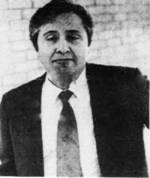 Philip Ortego, 1971 Philip Ortego, 1971
Prospector, Newspaperarchive.com
Philip
Ortego, Director of Chicano studies and Assistant Professor of English
at UTEP, denounces the school as a “racist
institution” for not supporting Chicano Studies with
institutional resources.
|
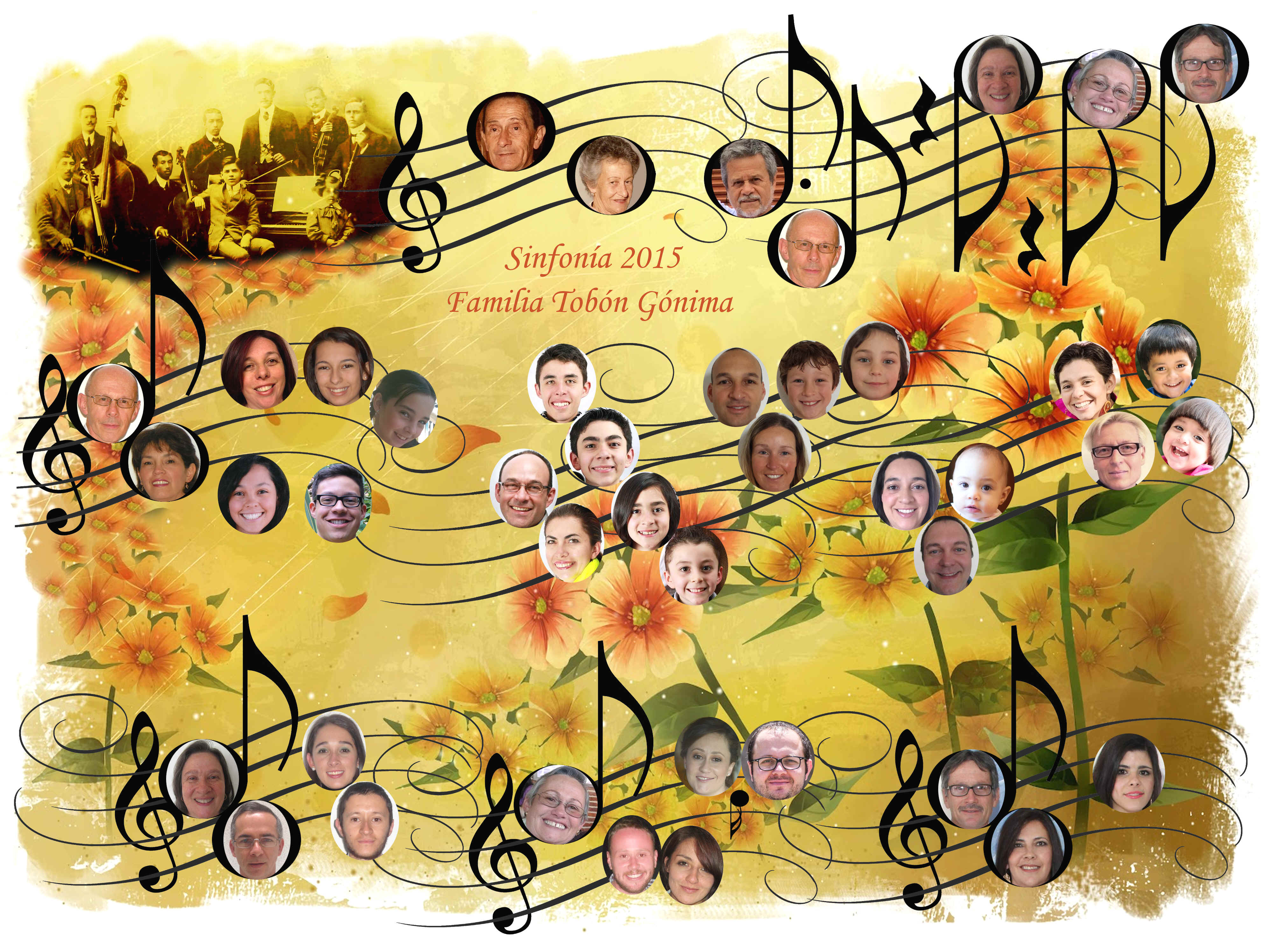

 Inarritu's best director win makes it two years in a row that the honor has gone to a Mexican filmmaker. His friend, Alfonso
Cuaron, won the Oscar last year for "Gravity", the 3-D space thriller starring Sandra Bullock and George
Clooney.
Inarritu's best director win makes it two years in a row that the honor has gone to a Mexican filmmaker. His friend, Alfonso
Cuaron, won the Oscar last year for "Gravity", the 3-D space thriller starring Sandra Bullock and George
Clooney.
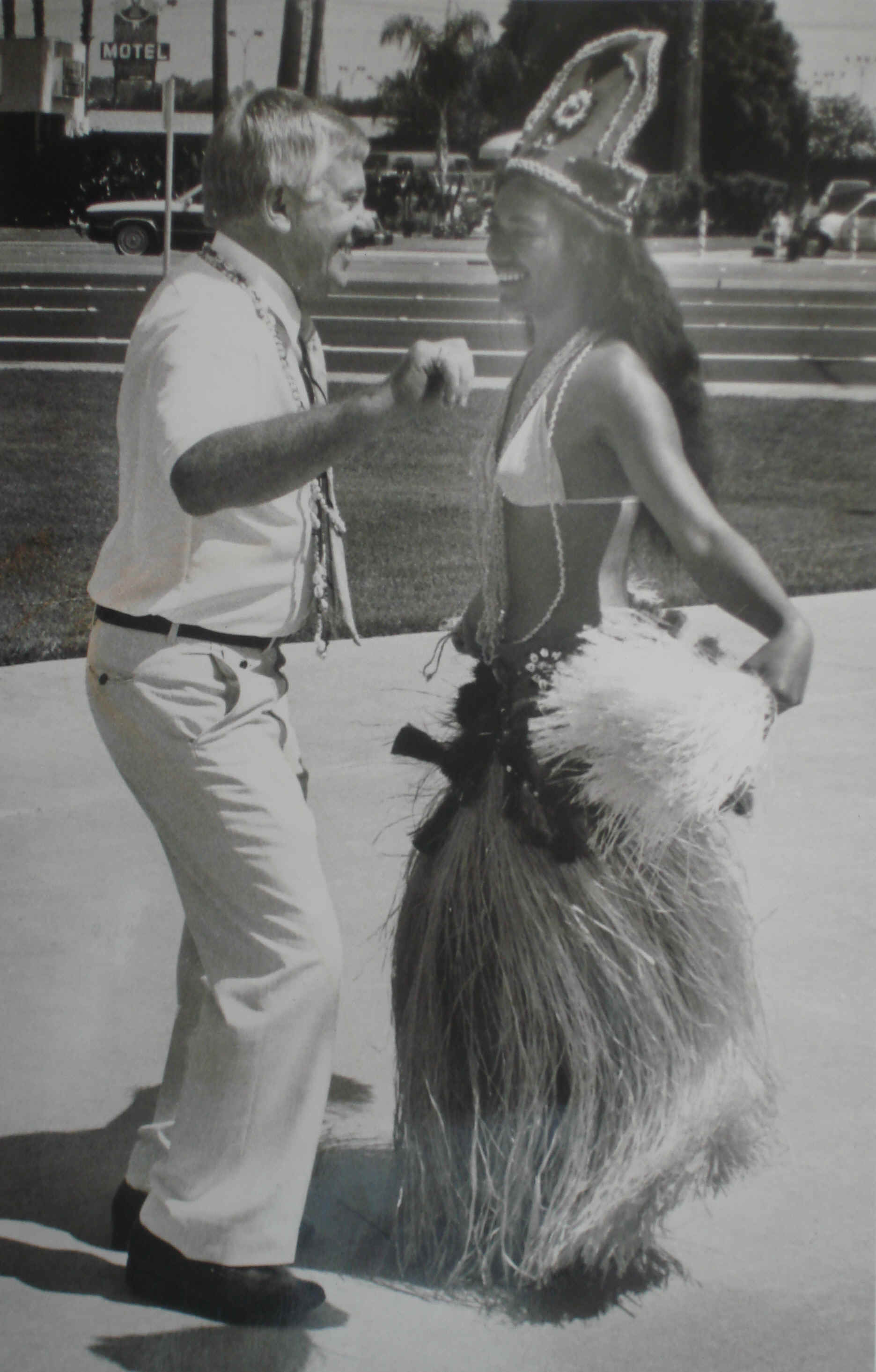

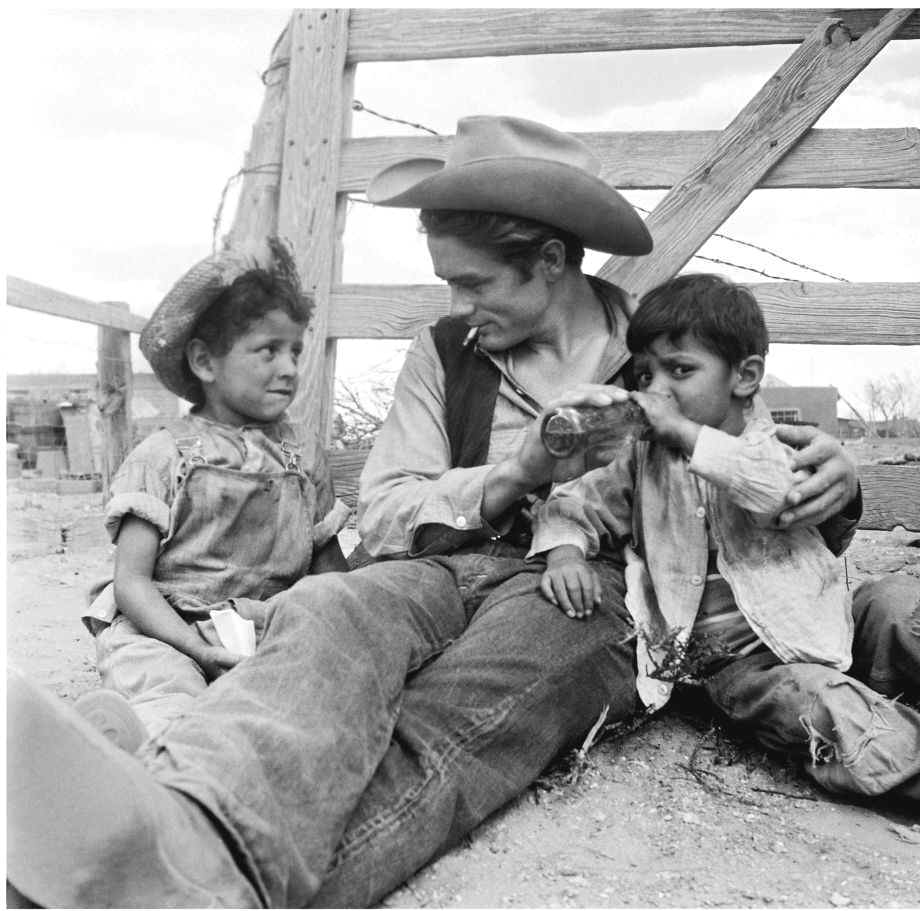
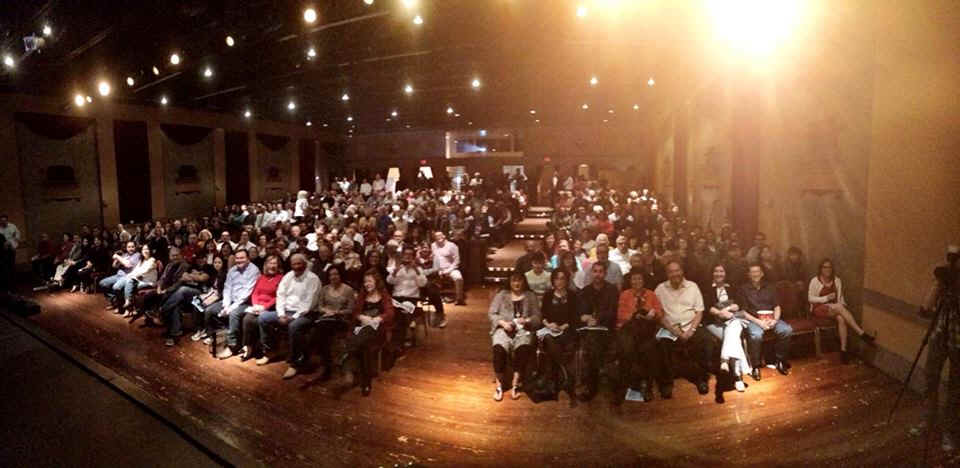
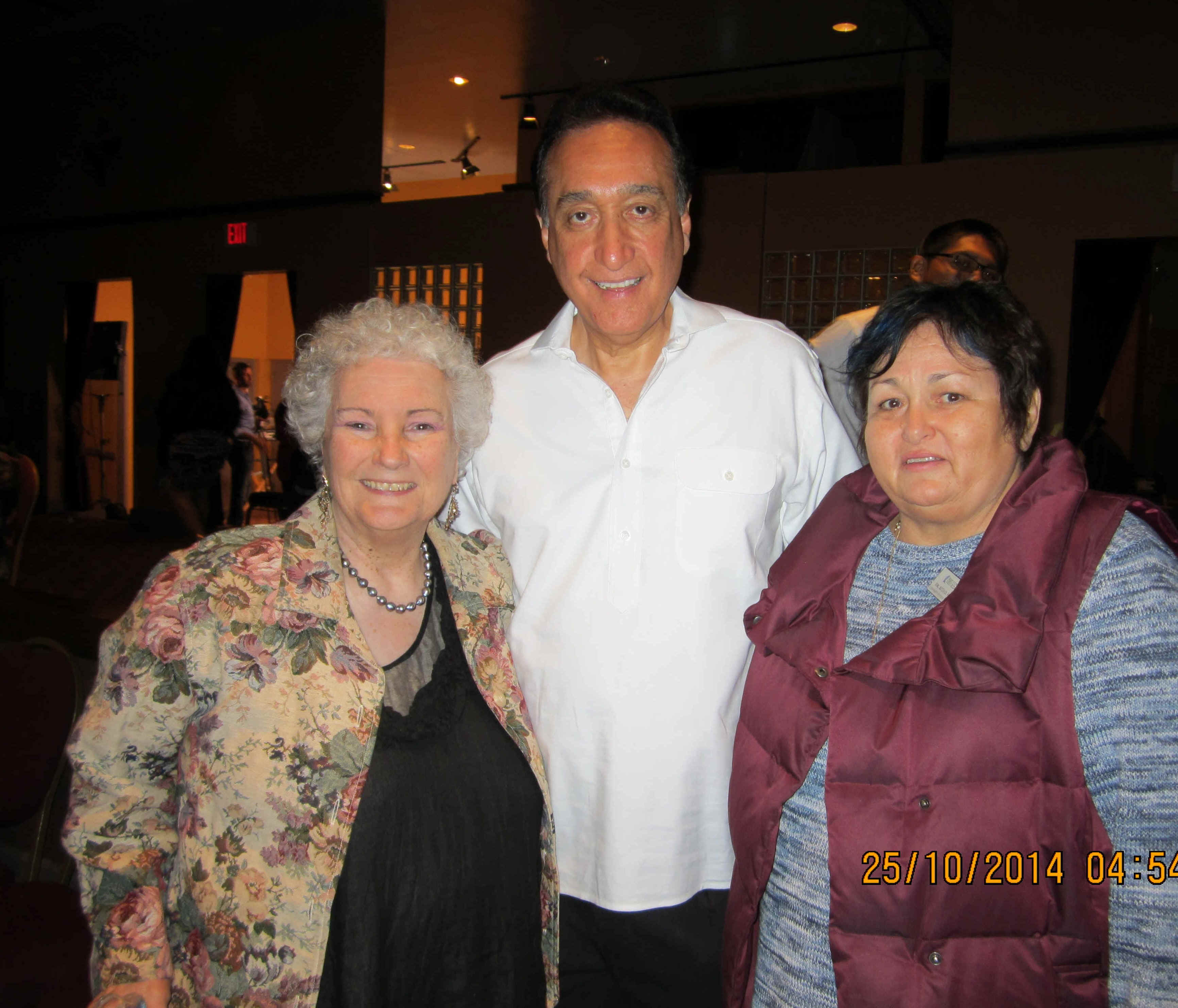
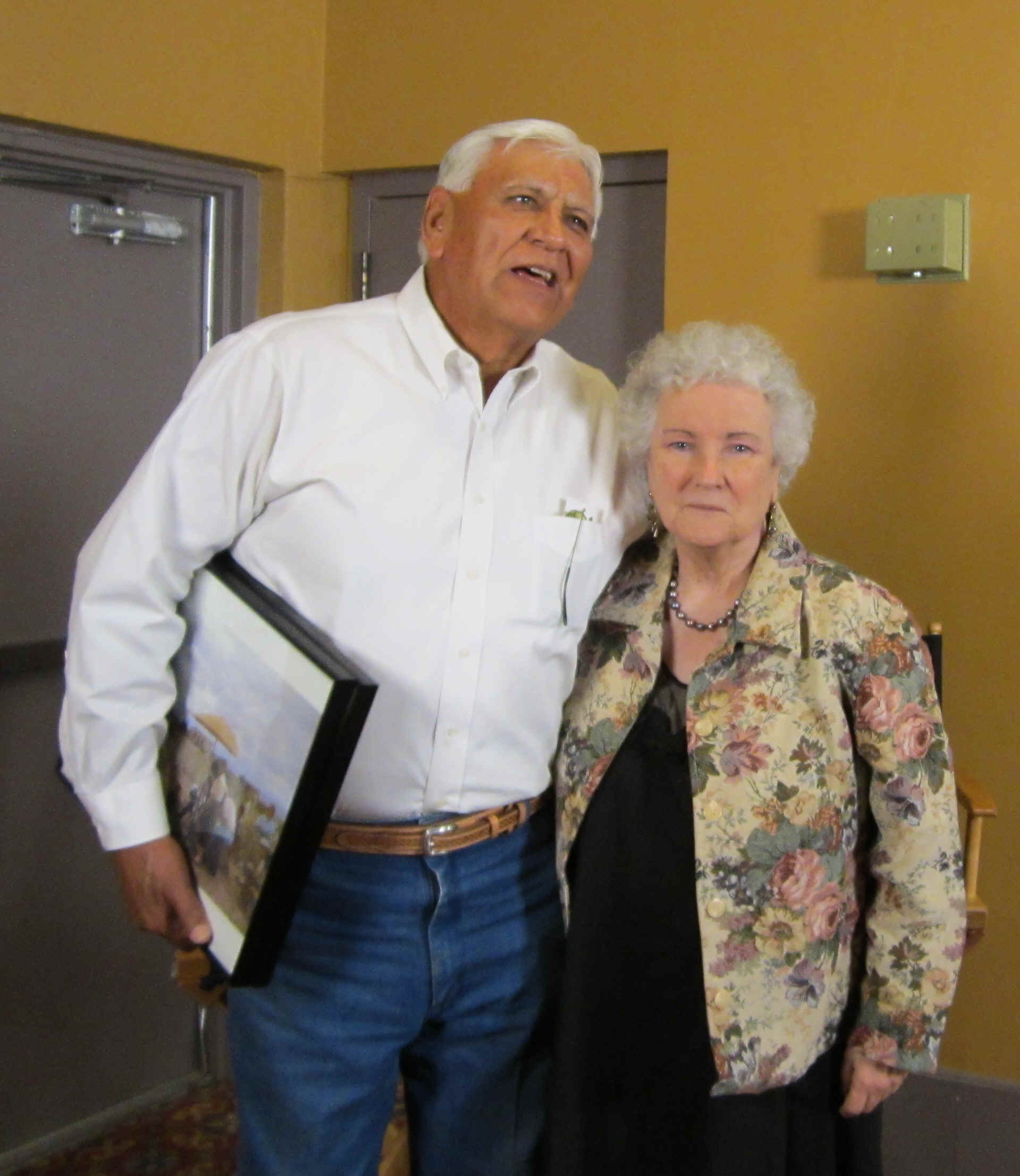
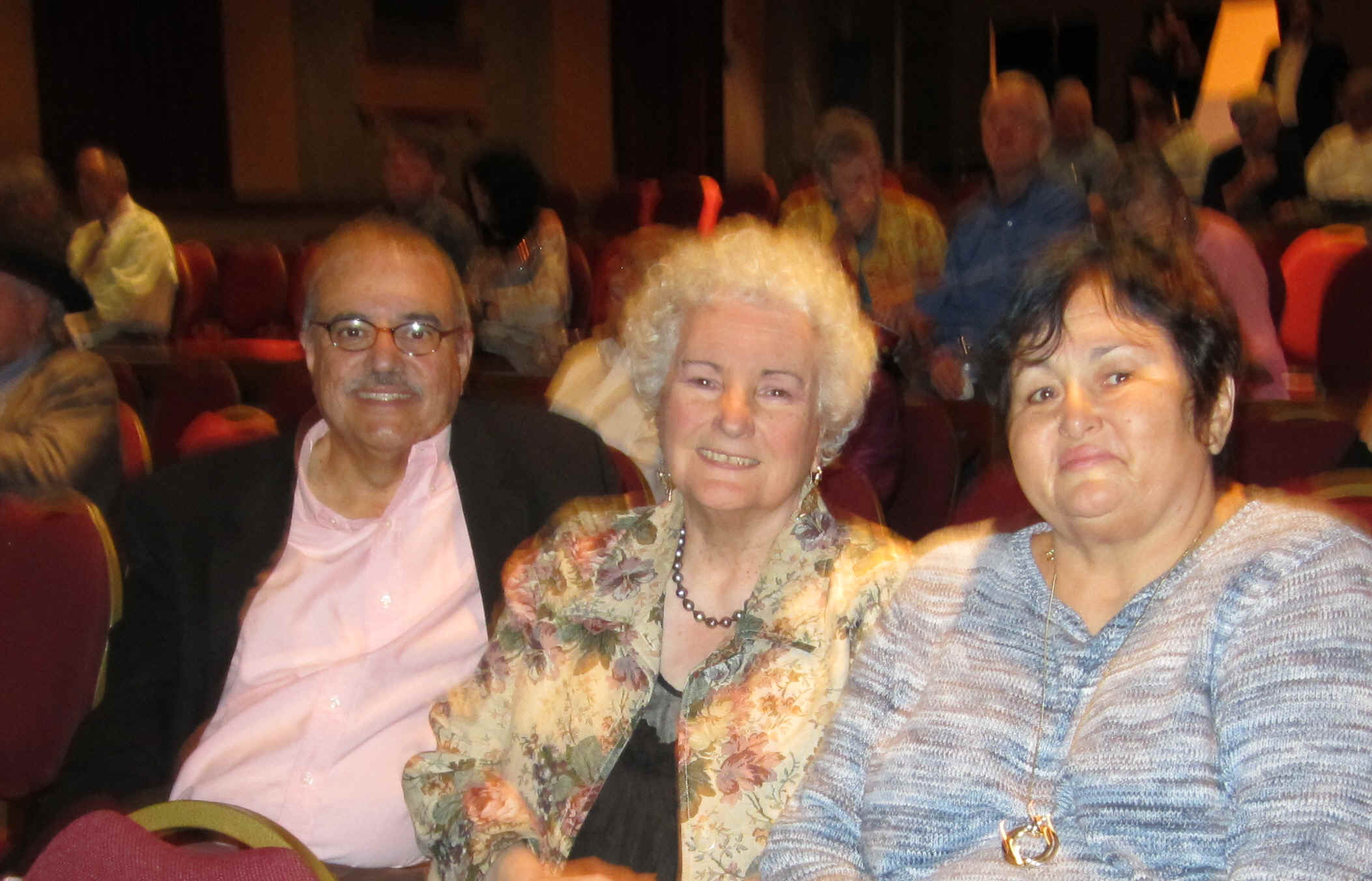
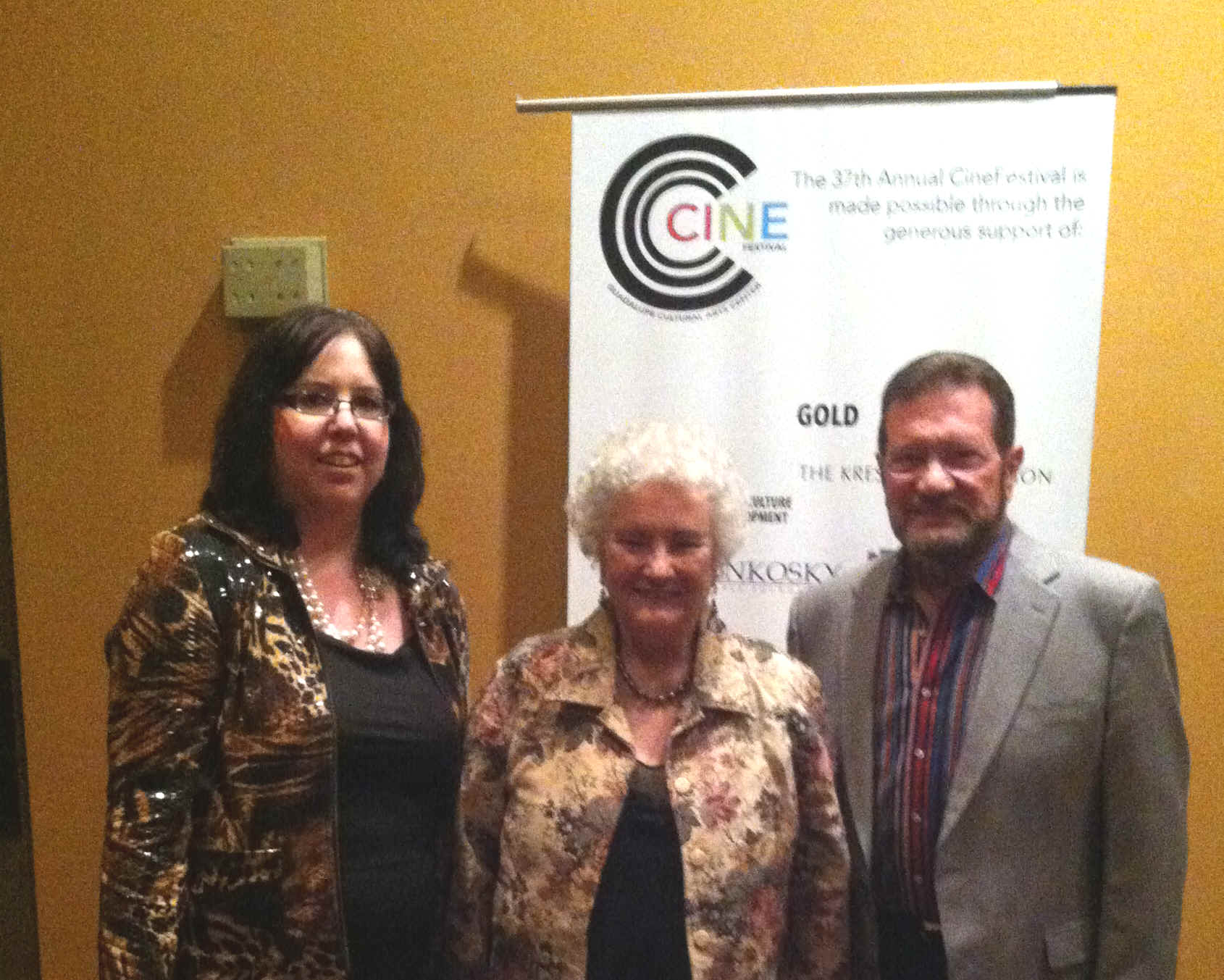
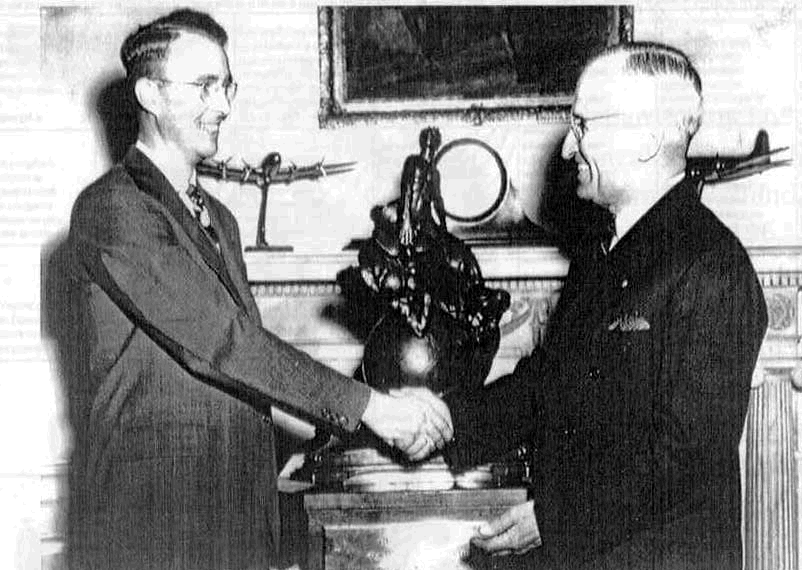
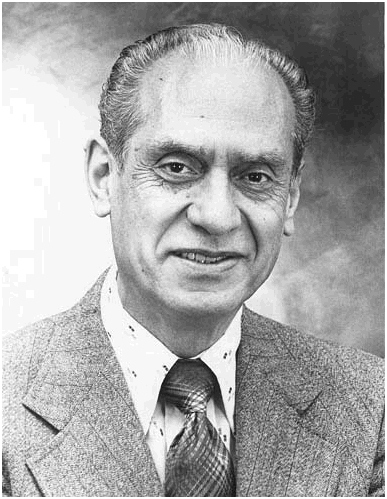
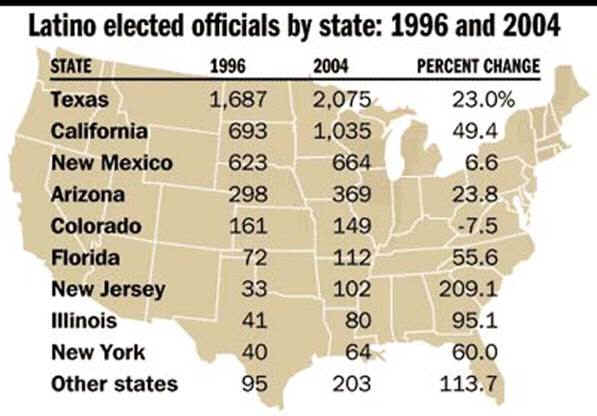
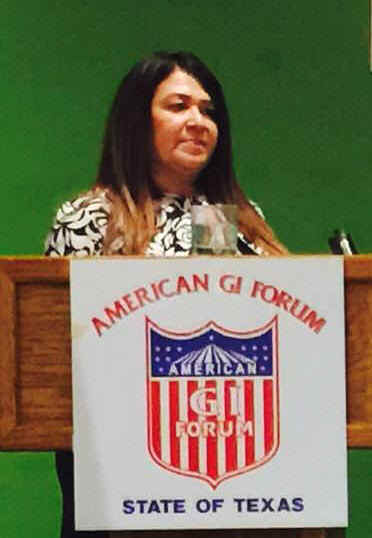
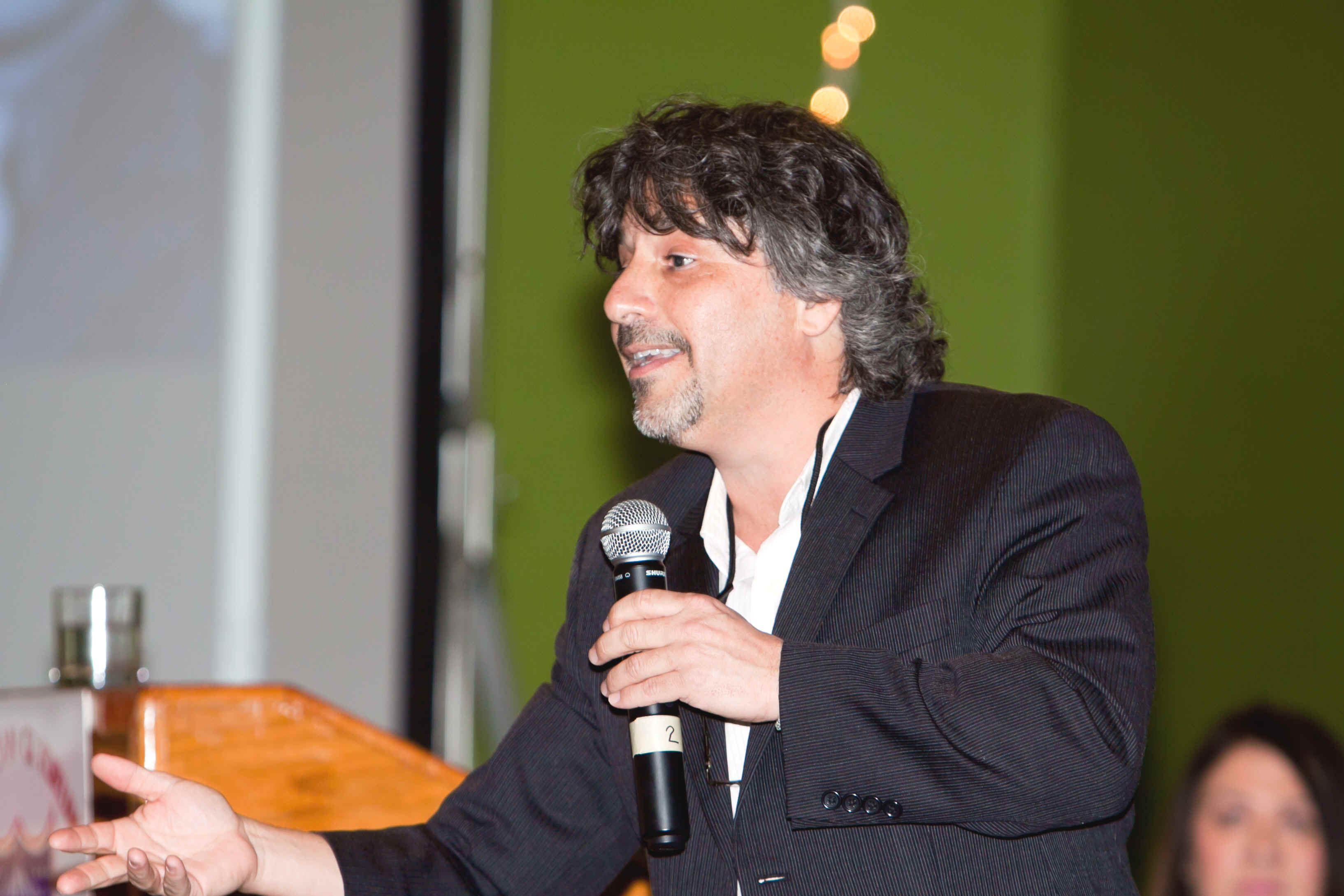
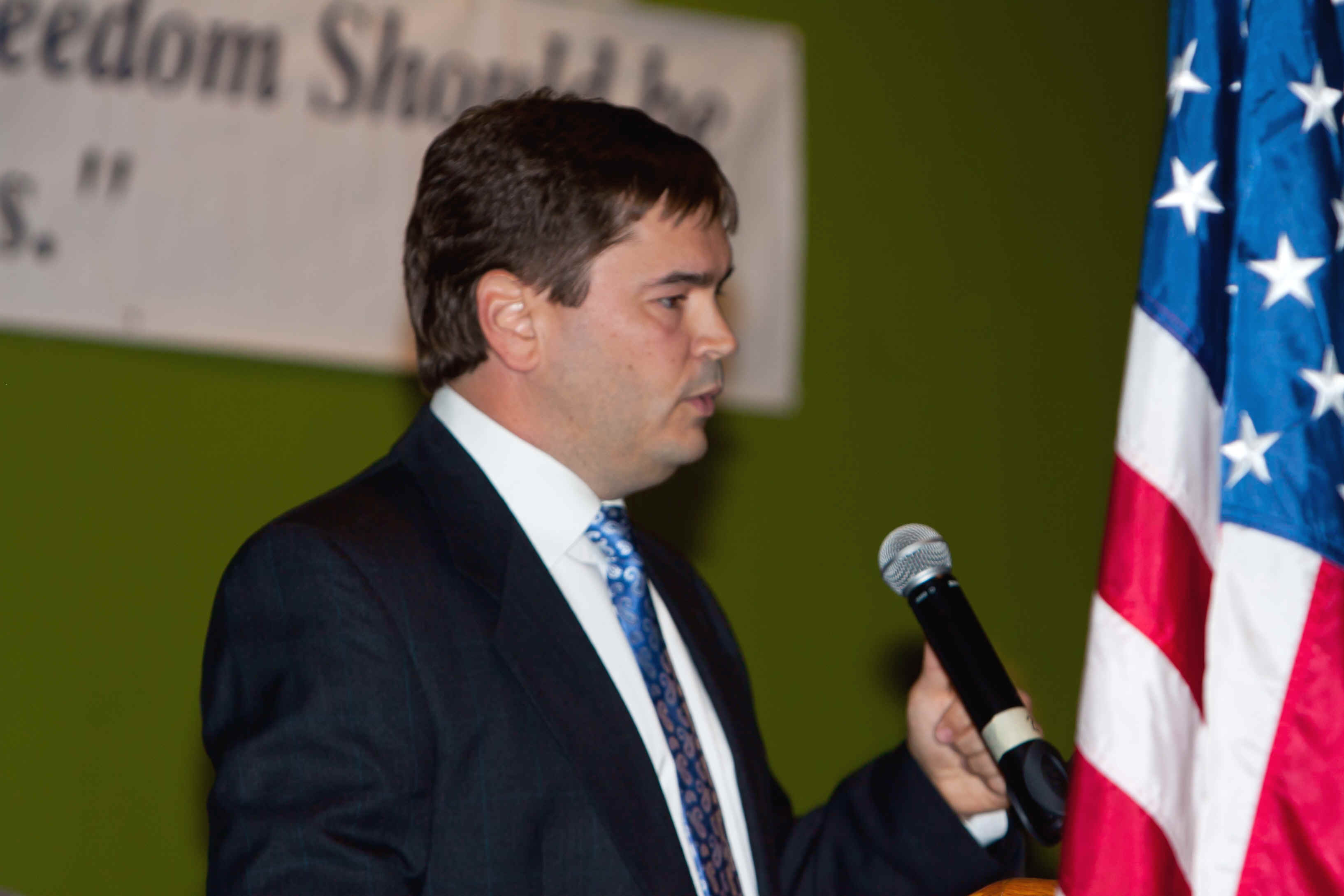 This year the keynote speakers were John Valadez producer of the Longoria Affair and Paul Eno, Director of Information Technology of General Motors.
This year the keynote speakers were John Valadez producer of the Longoria Affair and Paul Eno, Director of Information Technology of General Motors. 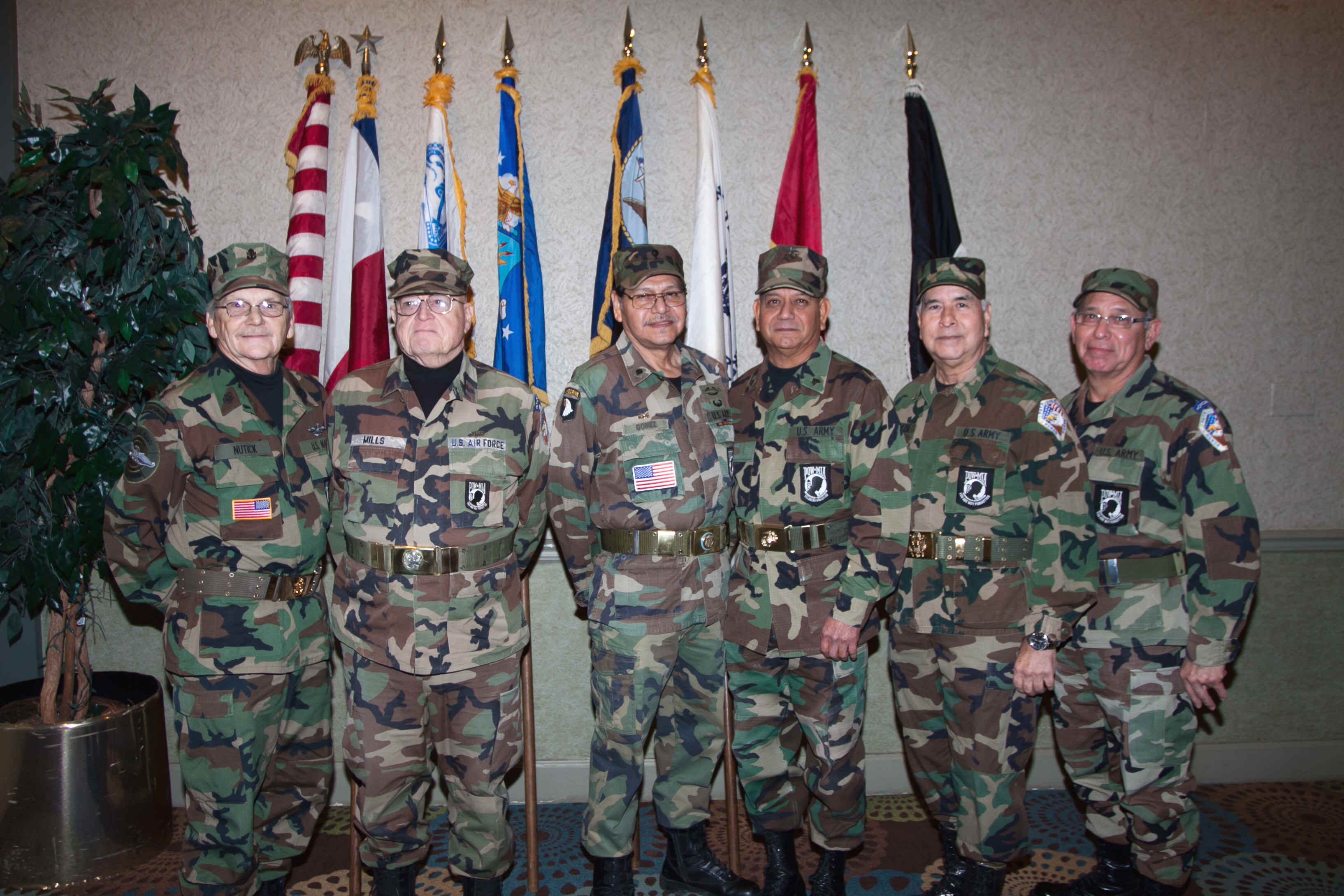
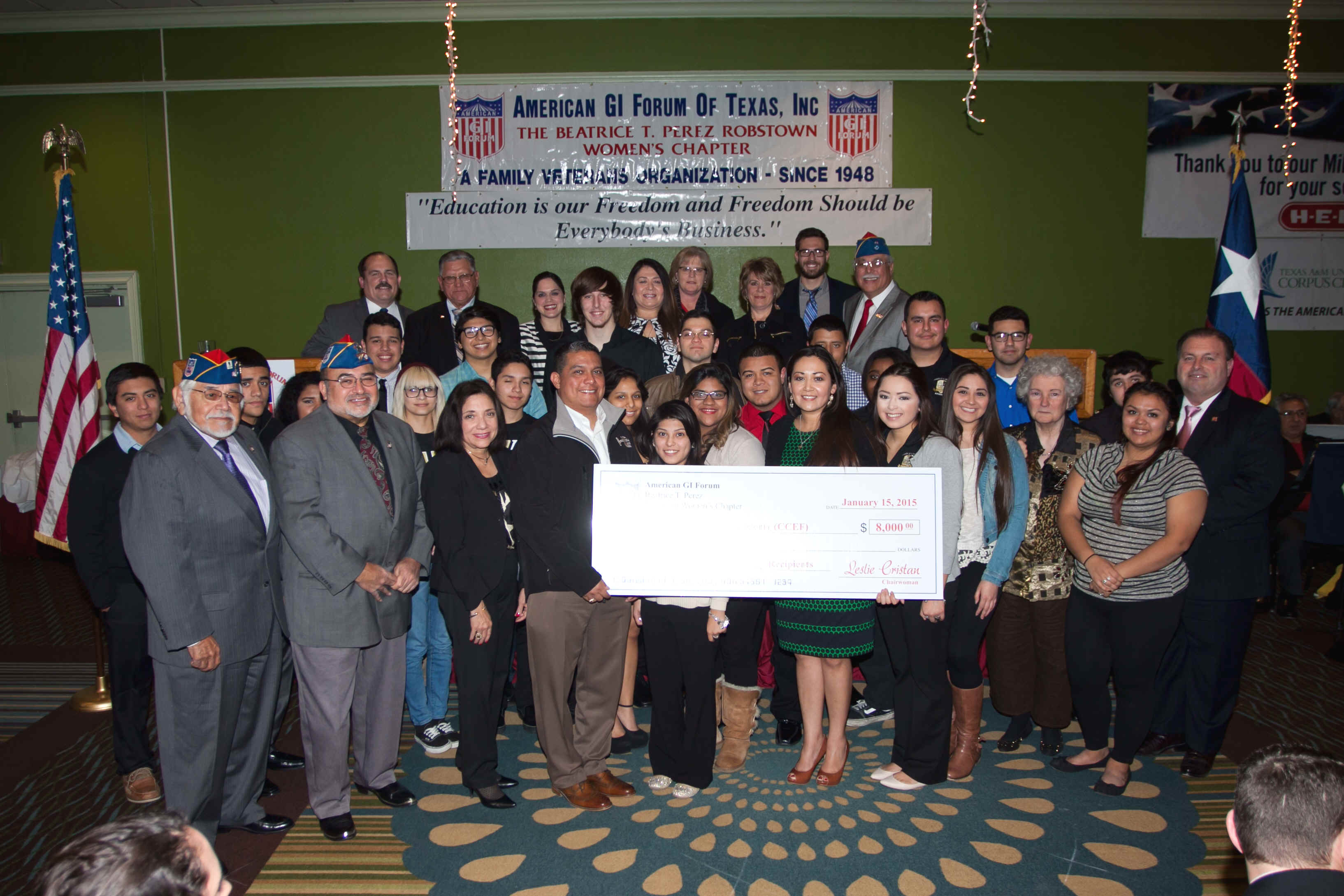
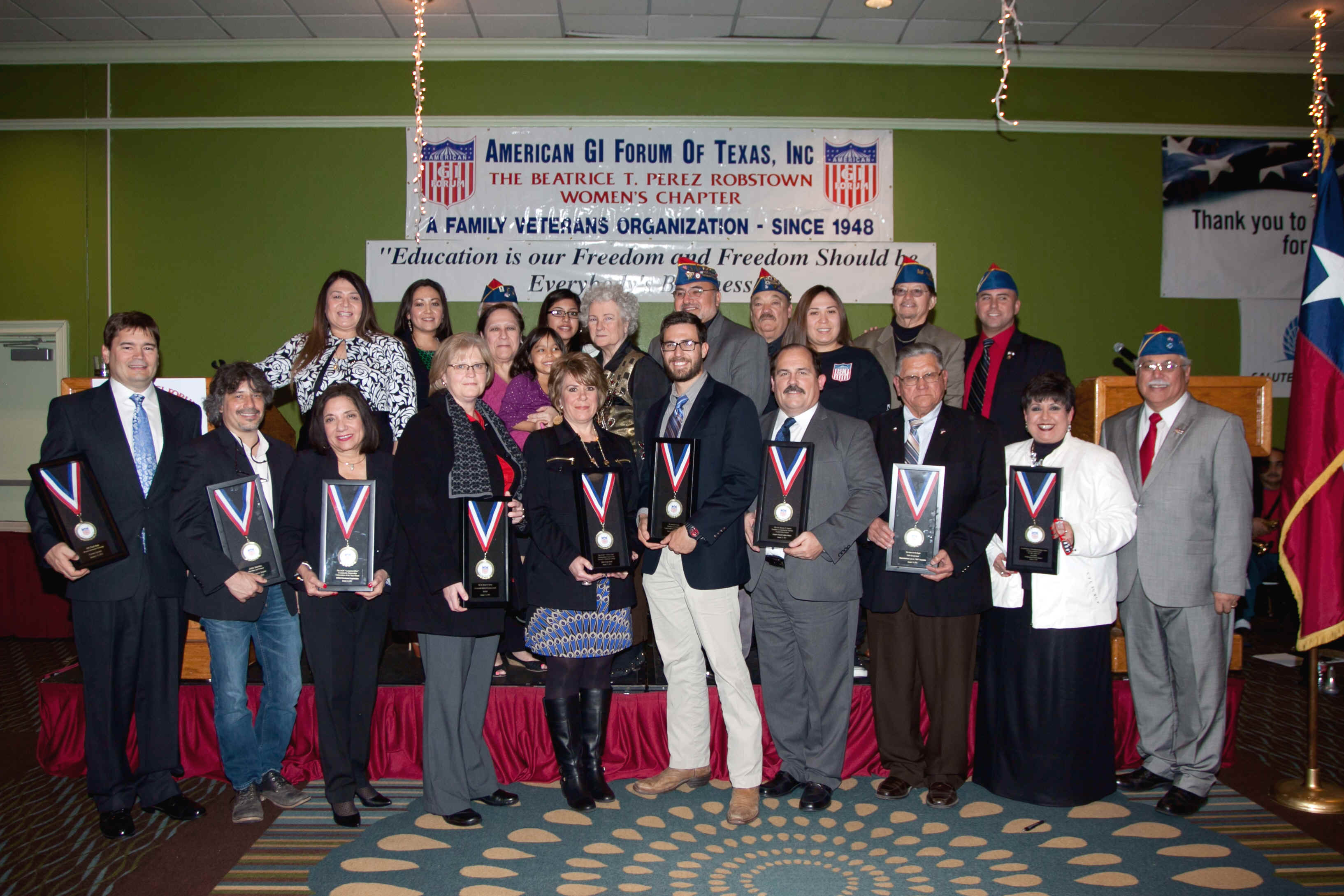
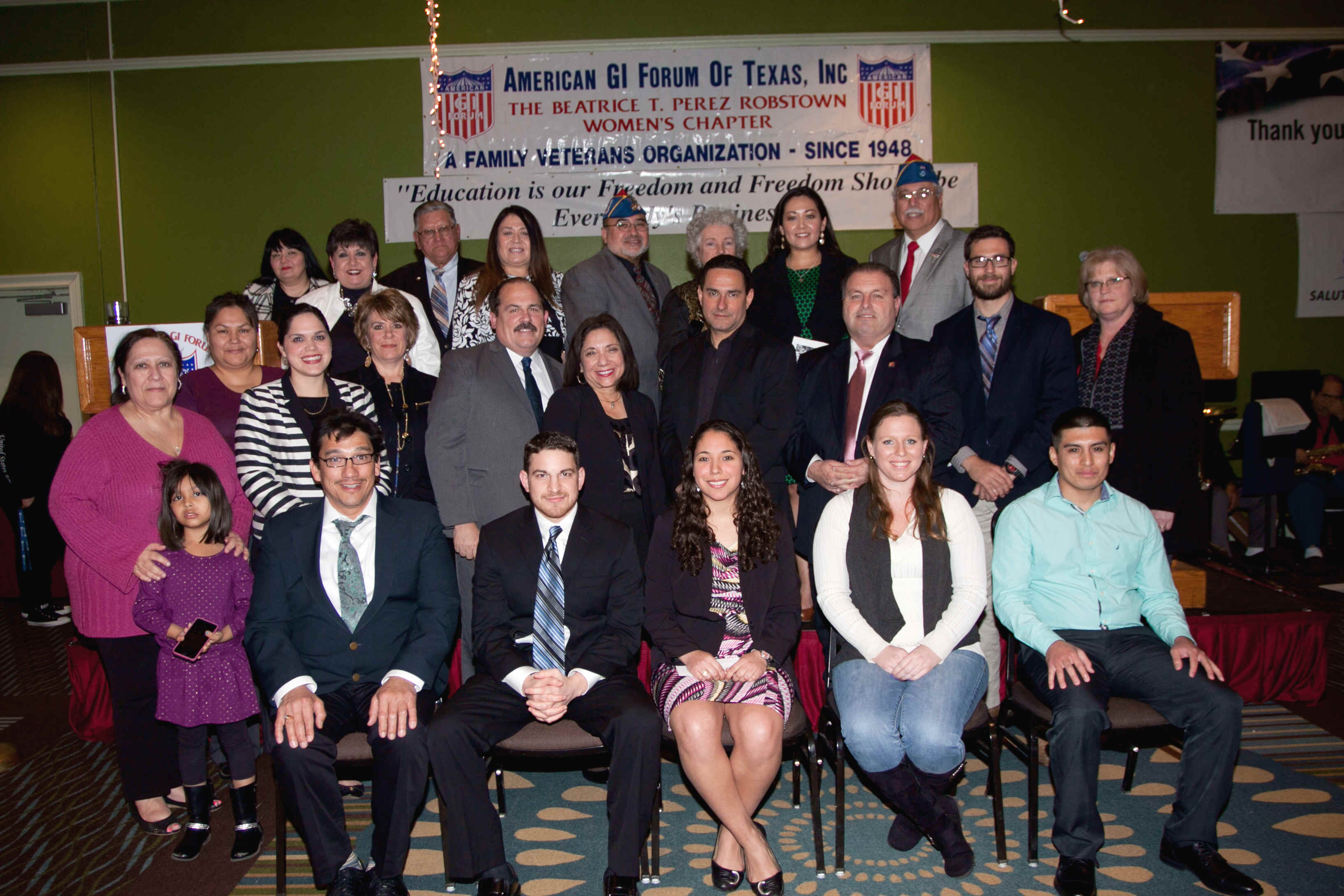

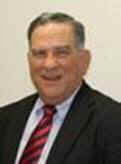


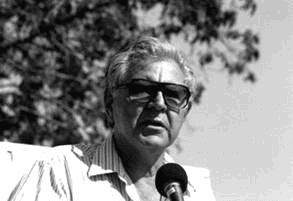

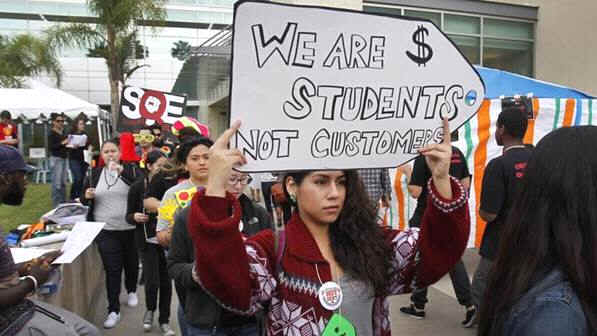 If
the statistics do not exist, the need for change does not exist. Like in
the case of urban renewal, the objective is growth that allows larger
administrative salaries, larger staffs, and bigger buildings that are
then named after donors – again they are messing with memory.
If
the statistics do not exist, the need for change does not exist. Like in
the case of urban renewal, the objective is growth that allows larger
administrative salaries, larger staffs, and bigger buildings that are
then named after donors – again they are messing with memory. 

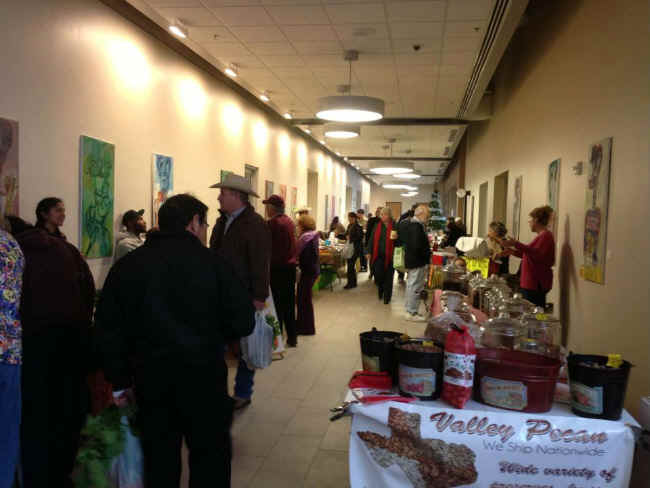



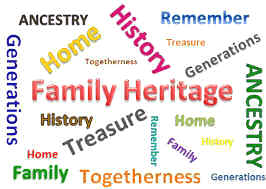


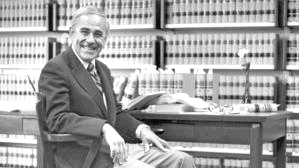
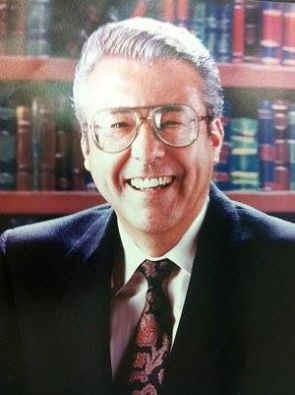
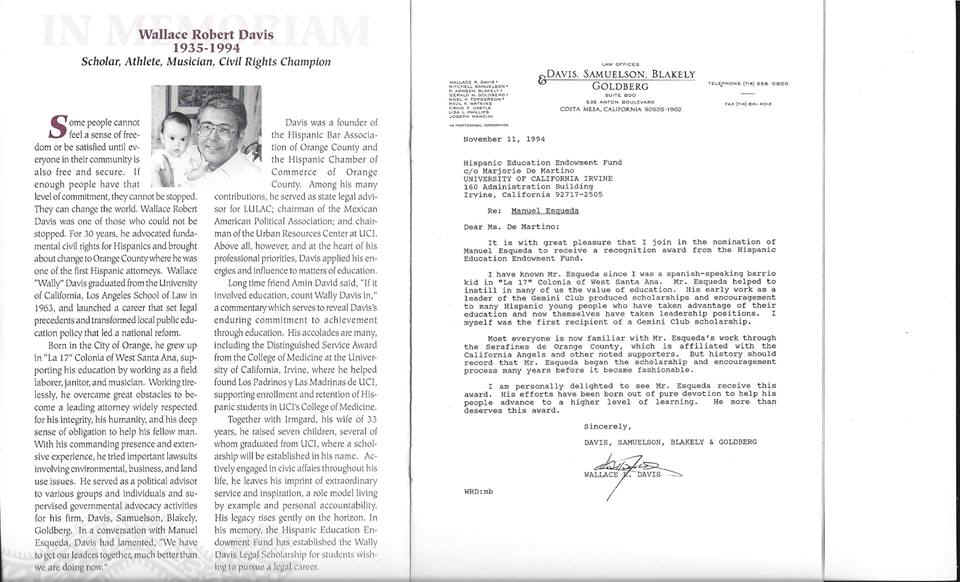
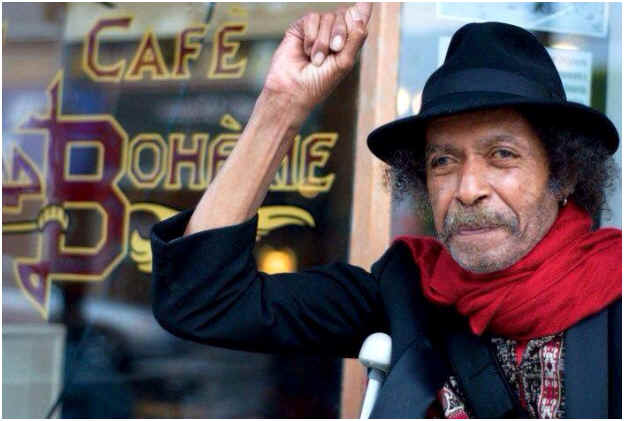

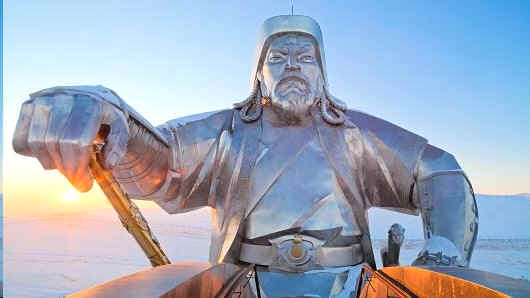

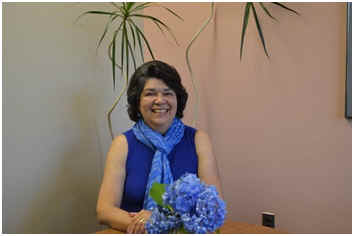
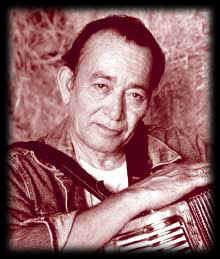 February,
8th, at the Annual Grammy Awards, Legend “Flaco Jimenez” was
presented a Lifetime Grammy Award. Attached is a brief video
tribute to the legendary Artist of Tejano American Tex-Mex culture in
music and more. Truly overdue I'm sure.
February,
8th, at the Annual Grammy Awards, Legend “Flaco Jimenez” was
presented a Lifetime Grammy Award. Attached is a brief video
tribute to the legendary Artist of Tejano American Tex-Mex culture in
music and more. Truly overdue I'm sure.


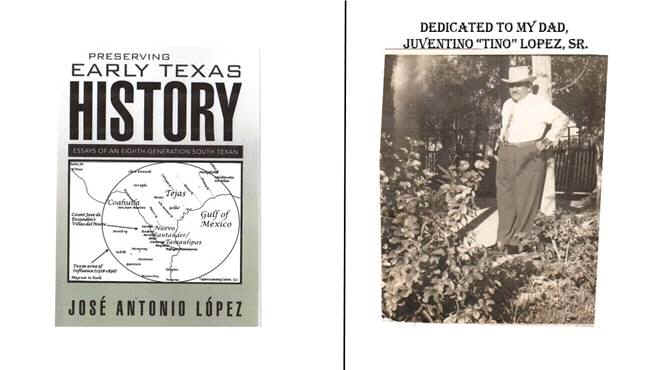

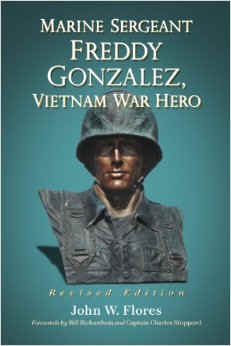



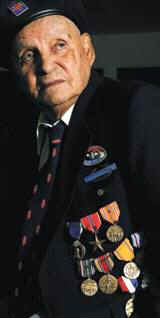
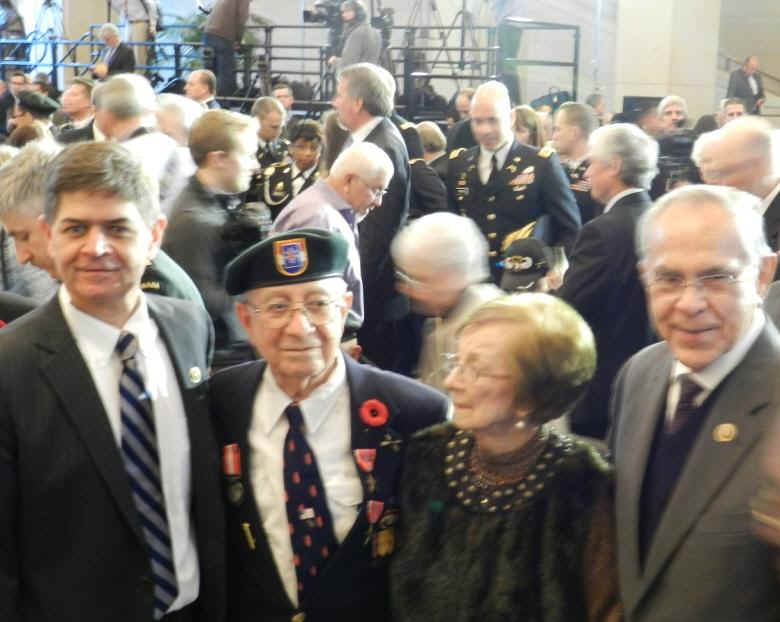
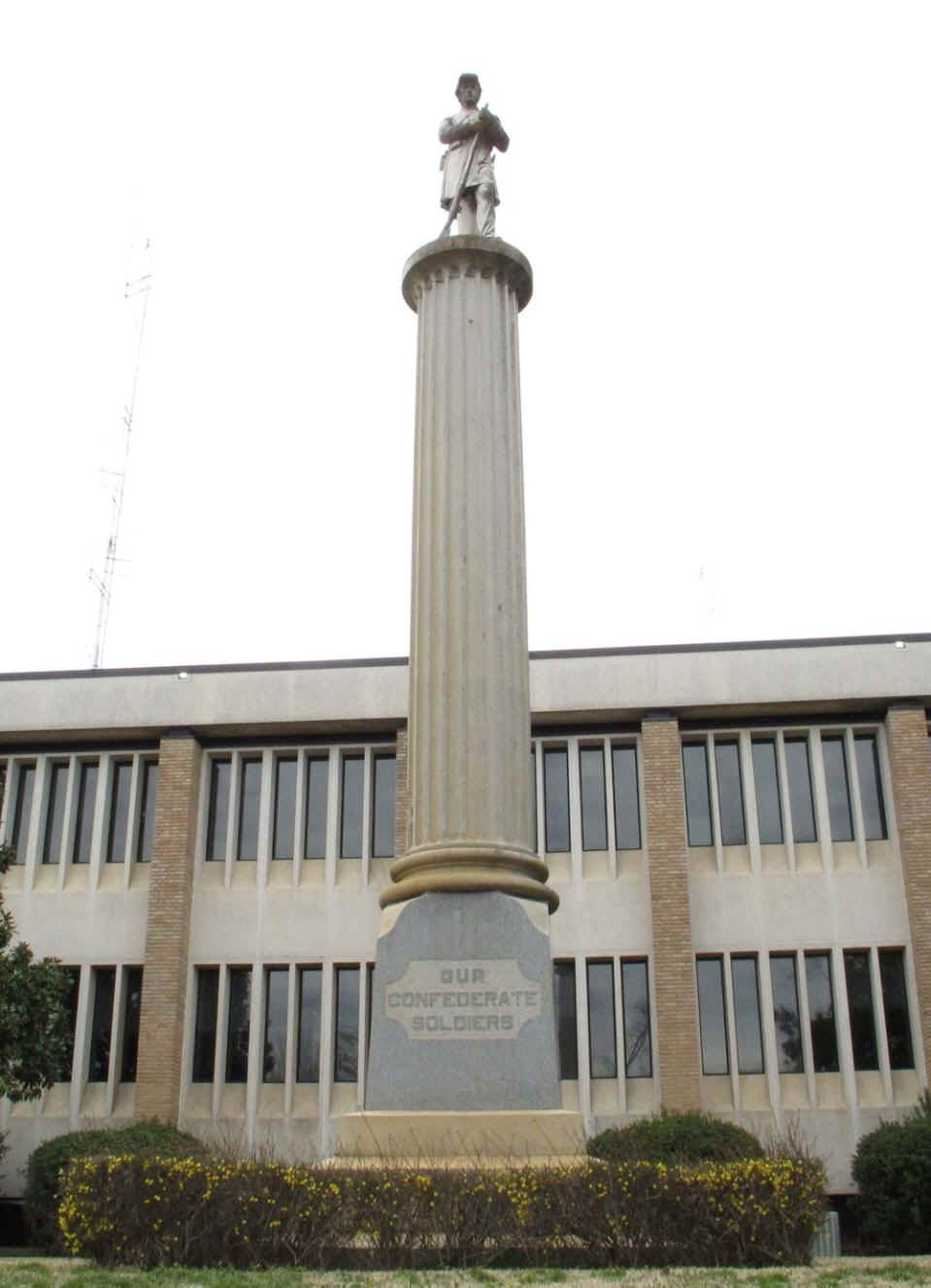
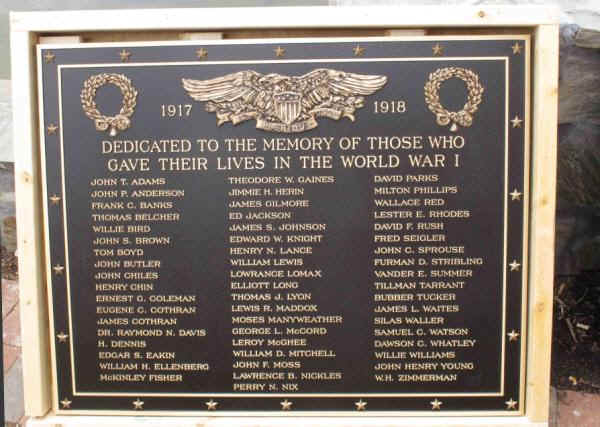
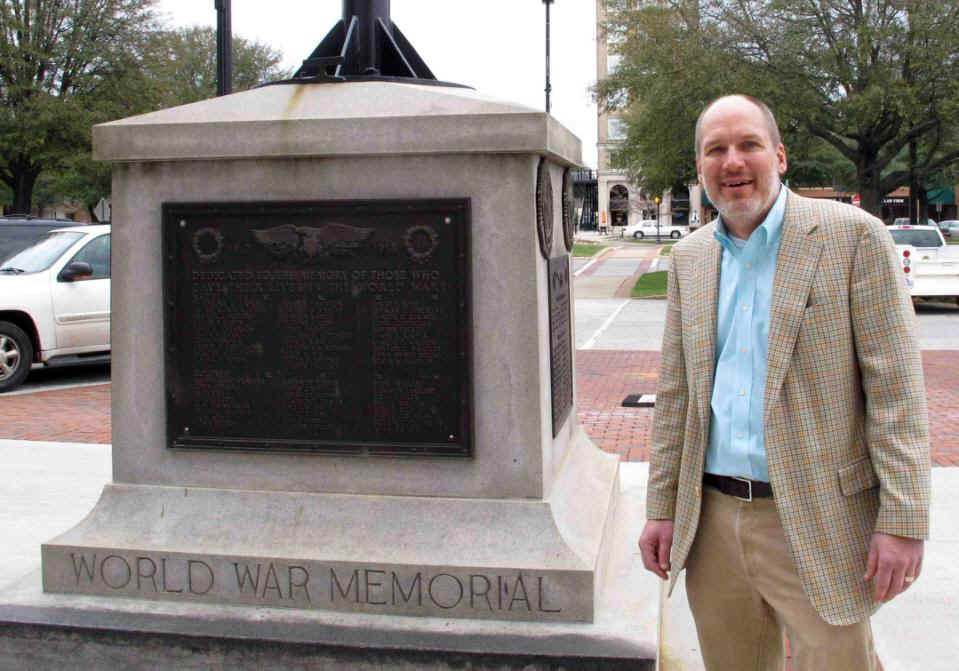
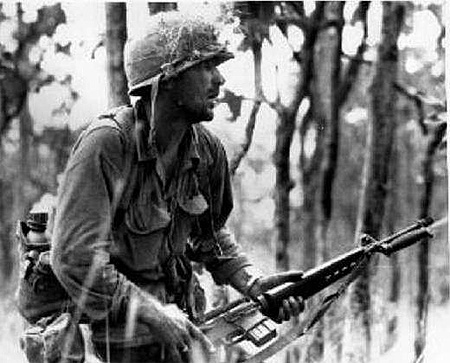
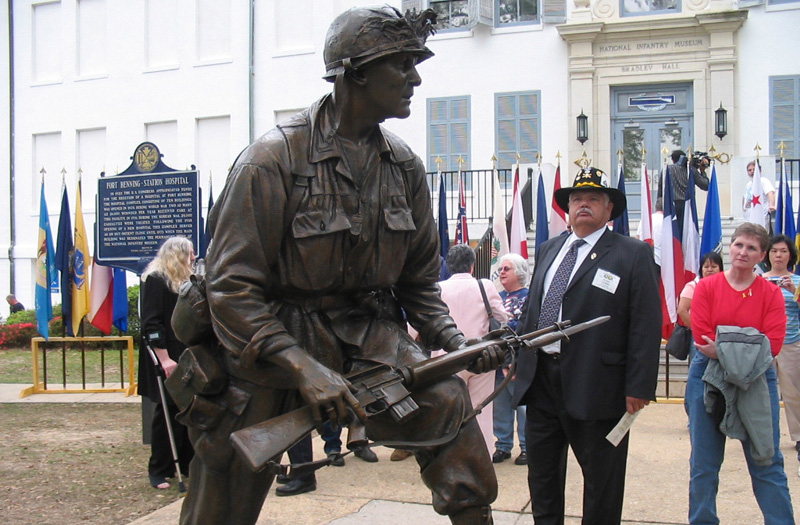
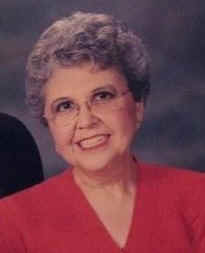
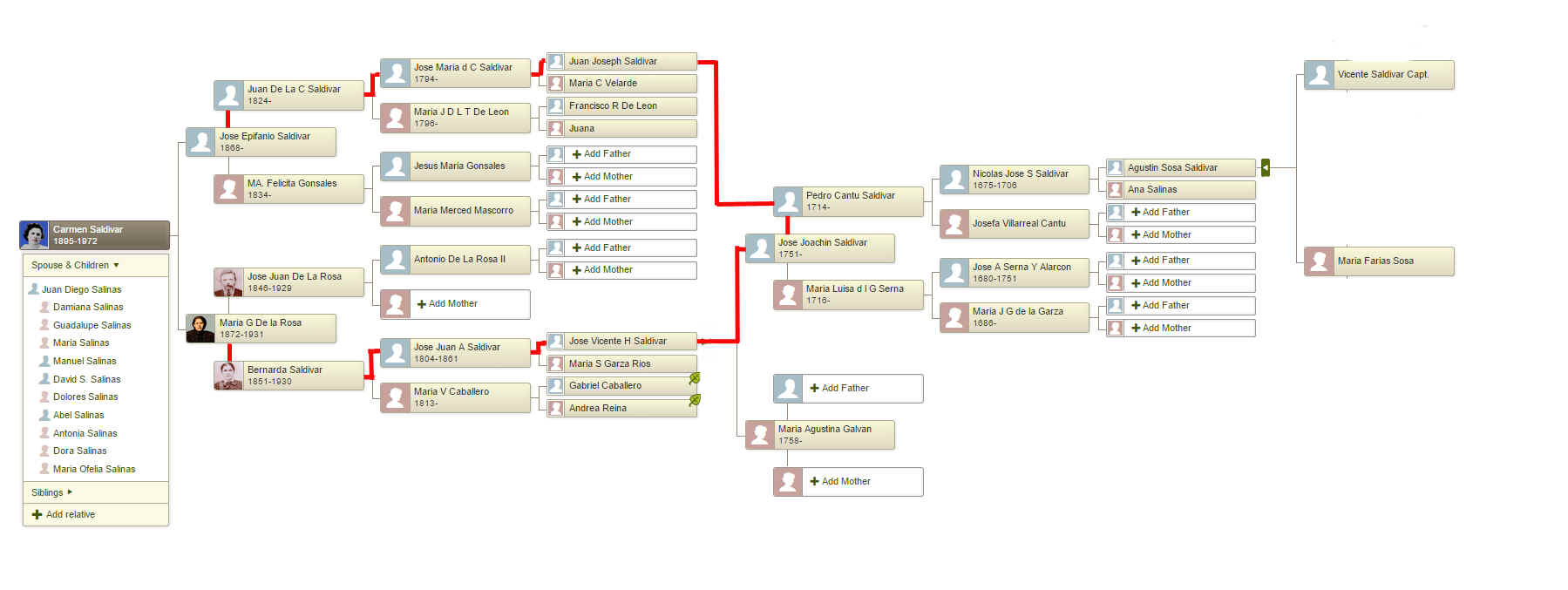






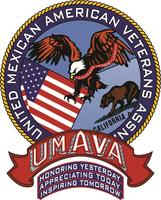

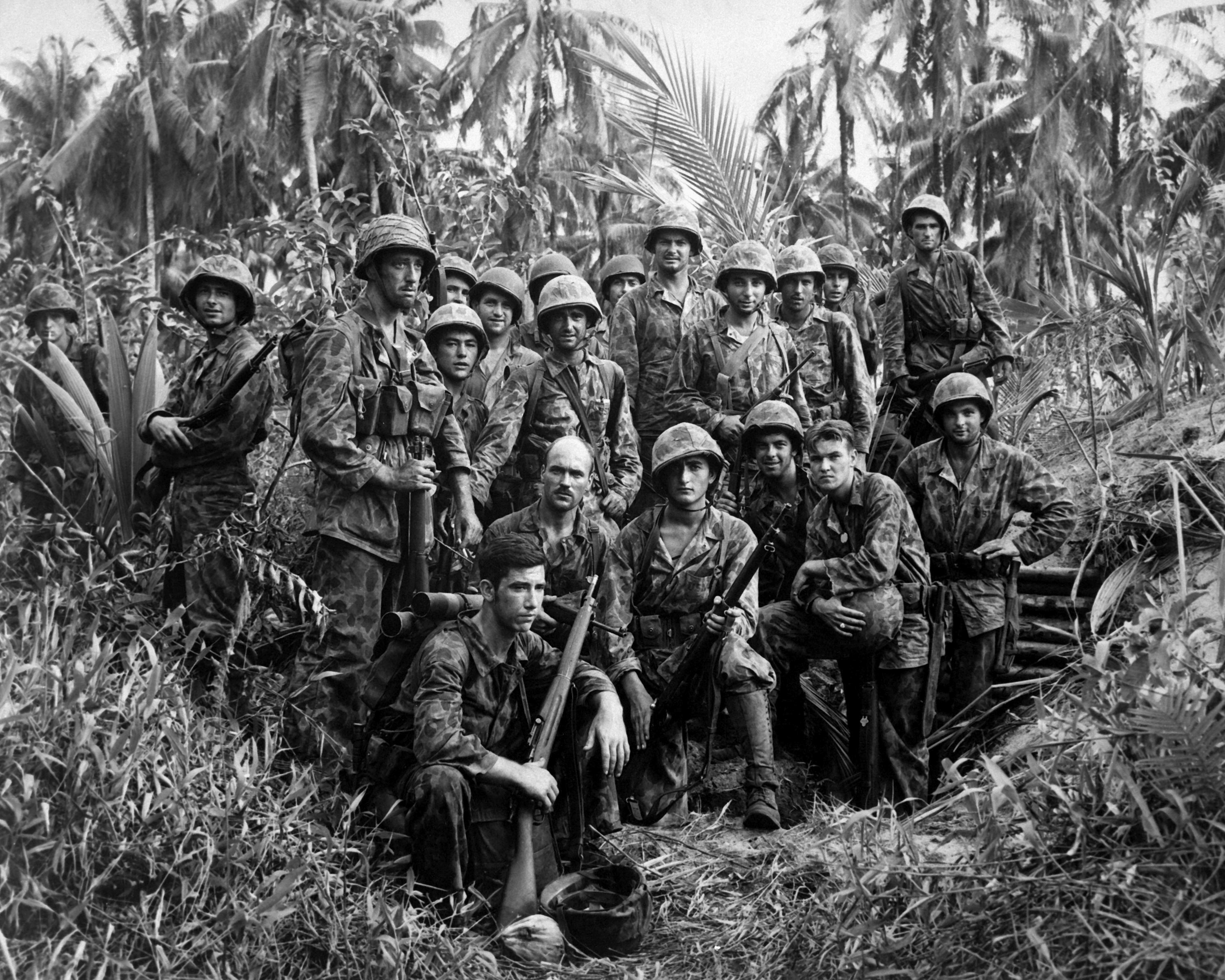

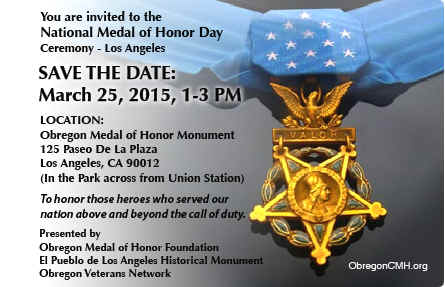
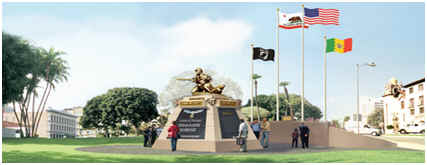
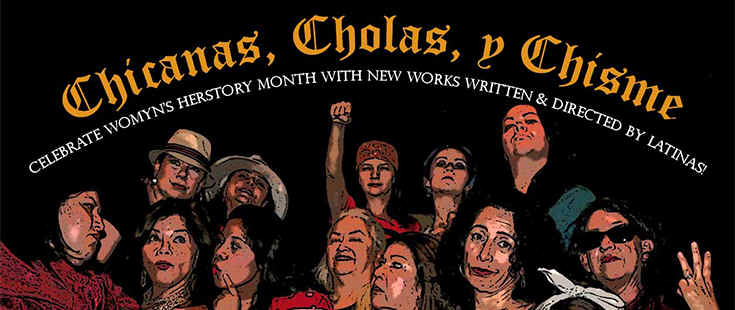

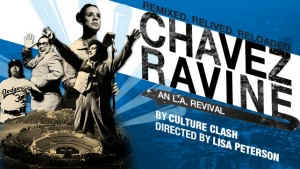
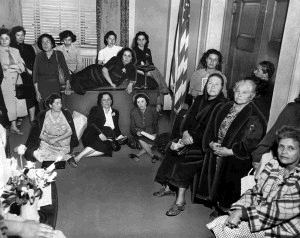 residents
of this traditional Chavez Ravine community. Unfortunately, this form of
social gentrification and profit-driven urban removal that dislocated
this closely-knit neighborhood over fifty years ago is still alive and
stronger than ever. The present economic power of developers and the
drive to profitably exploit vulnerable communities within the central
city and drastically change their ethnic, class and cultural composition
continues to steadily displace the long-time residents of many
neighborhoods. Chavez
Ravine home owners stage a sit-in outside the office of Mayor Bowron to
protest their evictions.
residents
of this traditional Chavez Ravine community. Unfortunately, this form of
social gentrification and profit-driven urban removal that dislocated
this closely-knit neighborhood over fifty years ago is still alive and
stronger than ever. The present economic power of developers and the
drive to profitably exploit vulnerable communities within the central
city and drastically change their ethnic, class and cultural composition
continues to steadily displace the long-time residents of many
neighborhoods. Chavez
Ravine home owners stage a sit-in outside the office of Mayor Bowron to
protest their evictions.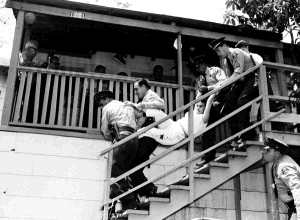 was
trying to hustle up a different site in Brooklyn for his new Dodger’s
baseball stadium and had used the tactic of threatening to move his team
to another city as leverage to strong-arm New York politicians into
agreeing to his plan. This request by O’Malley for a new stadium site
was firmly rejected by New York officials who felt that he was trying to
take advantage of the city’s taxpayers. The next characters to enter
this political mix were LA City Council member Roz Wyman and other
politicians and developers who saw the potential benefits of a financial
deal that would bring the Dodgers to LA.
was
trying to hustle up a different site in Brooklyn for his new Dodger’s
baseball stadium and had used the tactic of threatening to move his team
to another city as leverage to strong-arm New York politicians into
agreeing to his plan. This request by O’Malley for a new stadium site
was firmly rejected by New York officials who felt that he was trying to
take advantage of the city’s taxpayers. The next characters to enter
this political mix were LA City Council member Roz Wyman and other
politicians and developers who saw the potential benefits of a financial
deal that would bring the Dodgers to LA.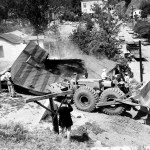 and
developers with the Dodger organization left a trail of unethical
political maneuvering, pay-off money and broken families for those
driven out of their homes and community by this wealthy and powerful
alliance. During the decade of the 1950’s many of the evicted
residents from Chavez Ravine were dispersed like refugees into other
neighborhoods such as Echo Park, Riverside Drive and across the river
into Lincoln Heights.
and
developers with the Dodger organization left a trail of unethical
political maneuvering, pay-off money and broken families for those
driven out of their homes and community by this wealthy and powerful
alliance. During the decade of the 1950’s many of the evicted
residents from Chavez Ravine were dispersed like refugees into other
neighborhoods such as Echo Park, Riverside Drive and across the river
into Lincoln Heights.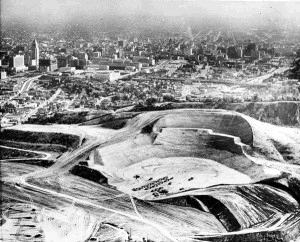 In
1960, the woodsy hills of Chavez Ravine were bulldozed by the city to
build Dodger Stadium for O’Malley.
In
1960, the woodsy hills of Chavez Ravine were bulldozed by the city to
build Dodger Stadium for O’Malley. 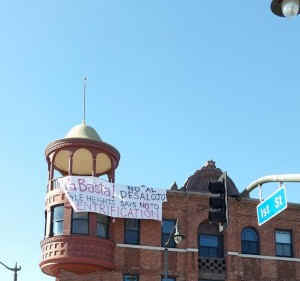 The
victims of gentrification do not simply disappear from sight. There is
now a homeless camp along the Arroyo riverbank made up of ex-Highland
Park residents who have been evicted due to the rapid wave of
gentrification occurring within the north end of Highland Park. There
are many other homeless camps now sprouting up along the banks of the
river and in areas of Elysian and Griffith Parks. The question for these
new homeless people of where to live is a growing problem not only for
them, but also for many others in the same situation. Forcing people out
of their homes and neighborhoods and disrupting their families and
children’s lives is not a logical solution, but merely contributes to
broader social and financial problems for those evicted and for our
society while simultaneously creating an aggressive new system of
economic and ethnic segregation within the city. Organized
resistance to gentrification is growing such as in Boyle Heights.
The
victims of gentrification do not simply disappear from sight. There is
now a homeless camp along the Arroyo riverbank made up of ex-Highland
Park residents who have been evicted due to the rapid wave of
gentrification occurring within the north end of Highland Park. There
are many other homeless camps now sprouting up along the banks of the
river and in areas of Elysian and Griffith Parks. The question for these
new homeless people of where to live is a growing problem not only for
them, but also for many others in the same situation. Forcing people out
of their homes and neighborhoods and disrupting their families and
children’s lives is not a logical solution, but merely contributes to
broader social and financial problems for those evicted and for our
society while simultaneously creating an aggressive new system of
economic and ethnic segregation within the city. Organized
resistance to gentrification is growing such as in Boyle Heights. 

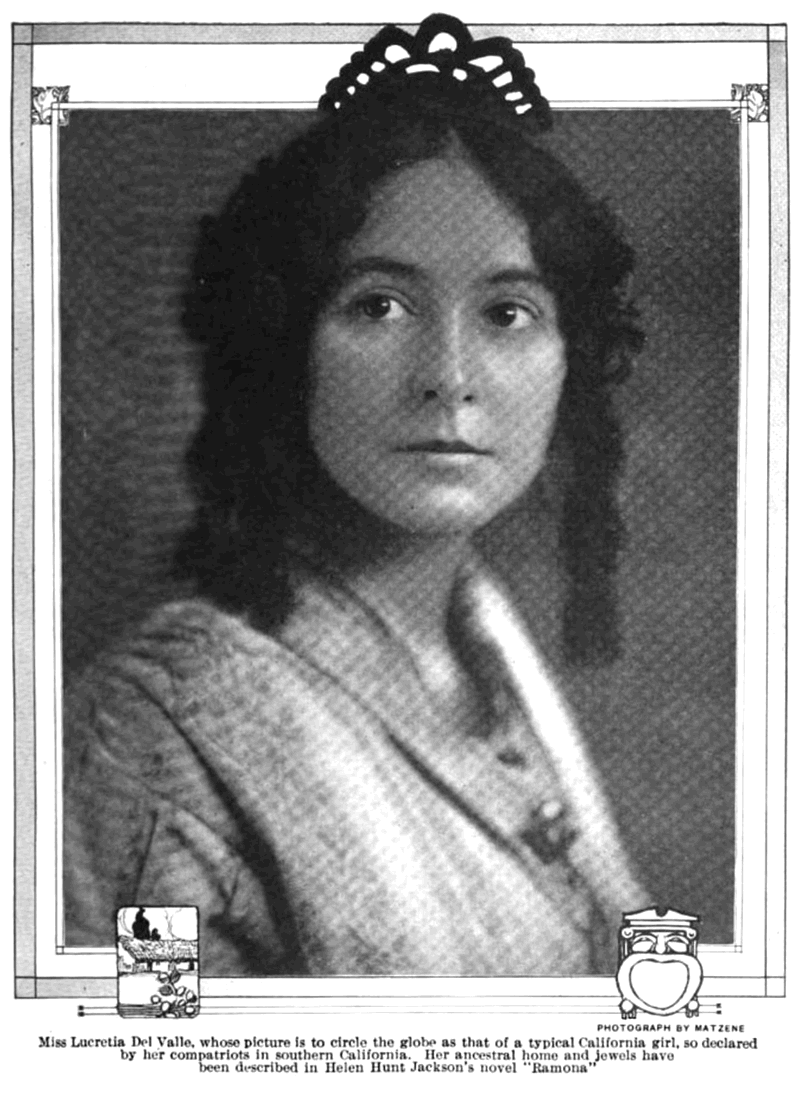 Truly
she is a Daughter of the Dons — beautiful, vivacious, talented
Lucretia del Valle, scion of an ancient Spanish-California family,
whose picture is to circle the globe as that of a typical California
girl, so declared by her compatriots in southern California. That the
choice is an especially happy one, and that the commonwealth is to be
congratulated on the wisdom of the Southland in selecting this
particular one of many charming daughters to carry her message around
the world, is evident from even a brief survey of the facts.
Truly
she is a Daughter of the Dons — beautiful, vivacious, talented
Lucretia del Valle, scion of an ancient Spanish-California family,
whose picture is to circle the globe as that of a typical California
girl, so declared by her compatriots in southern California. That the
choice is an especially happy one, and that the commonwealth is to be
congratulated on the wisdom of the Southland in selecting this
particular one of many charming daughters to carry her message around
the world, is evident from even a brief survey of the facts.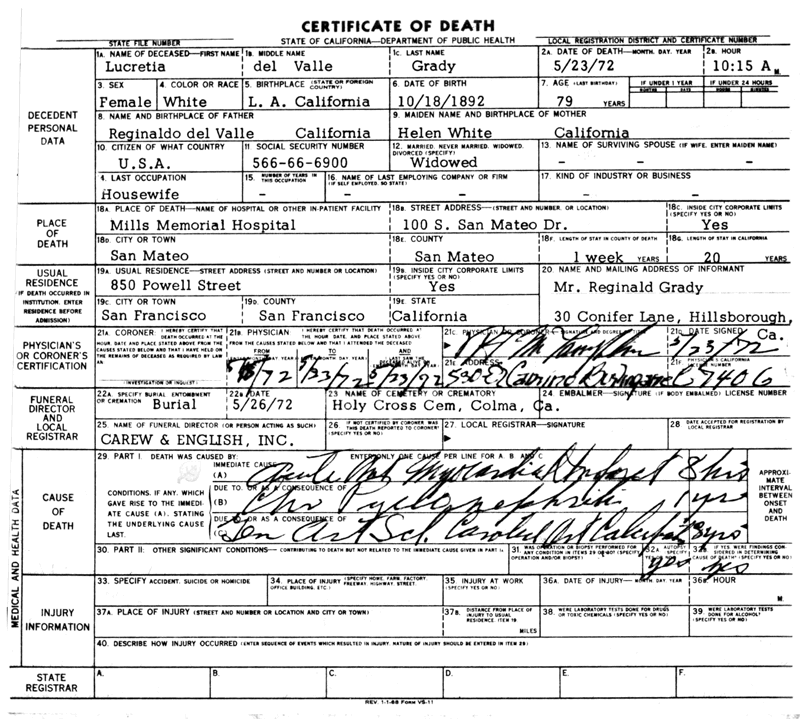
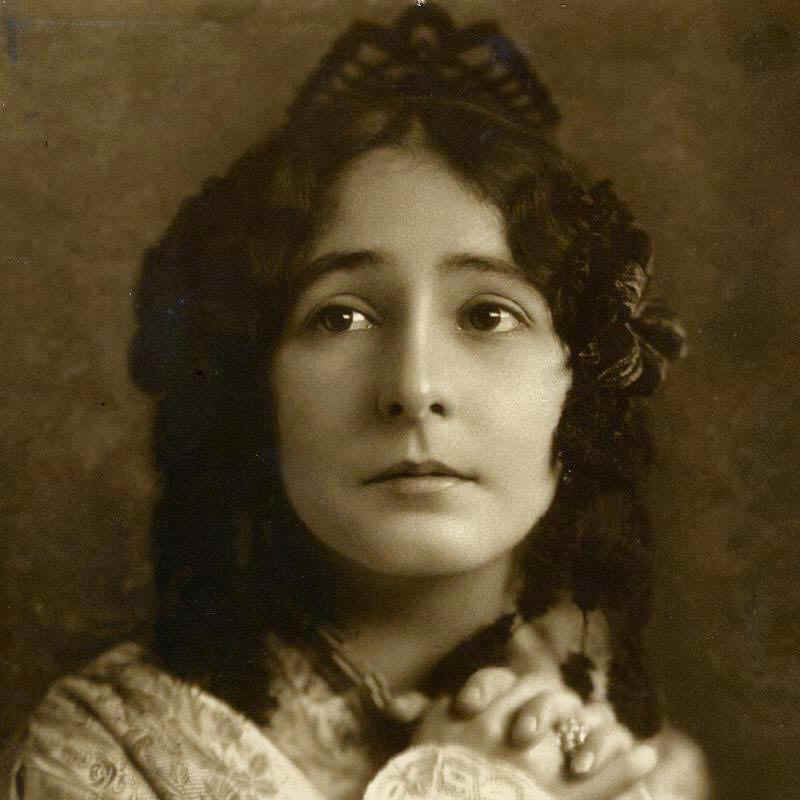 http://www.scvhistory.com/gif/mugs/lucretiadelvalle.jpgA
lifesize, 70x60-inch portrait titled "The Leading Lady" by the
American impressionist painter Guy Rose depicts Lucretia in her role as
Doña Josefa Yorba. It won the gold medal at the 1915 Panama-California
Exposition in San Diego and now resides in Balboa Park's San Diego
History Center.
http://www.scvhistory.com/gif/mugs/lucretiadelvalle.jpgA
lifesize, 70x60-inch portrait titled "The Leading Lady" by the
American impressionist painter Guy Rose depicts Lucretia in her role as
Doña Josefa Yorba. It won the gold medal at the 1915 Panama-California
Exposition in San Diego and now resides in Balboa Park's San Diego
History Center.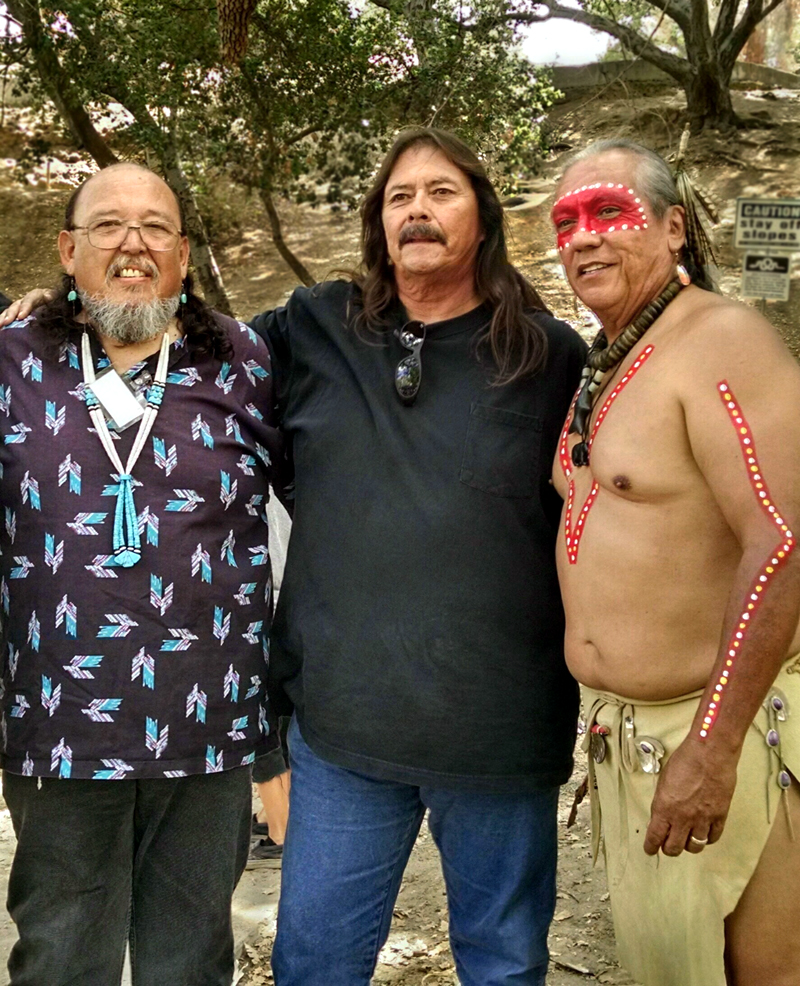
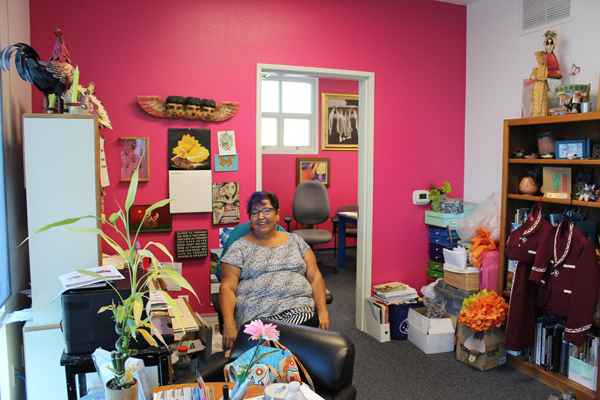
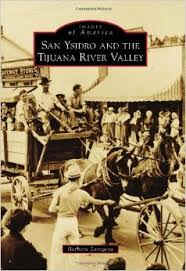 San
Ysidro and The Tijuana River Valley (Images of America (Arcadia
Publishing)
San
Ysidro and The Tijuana River Valley (Images of America (Arcadia
Publishing)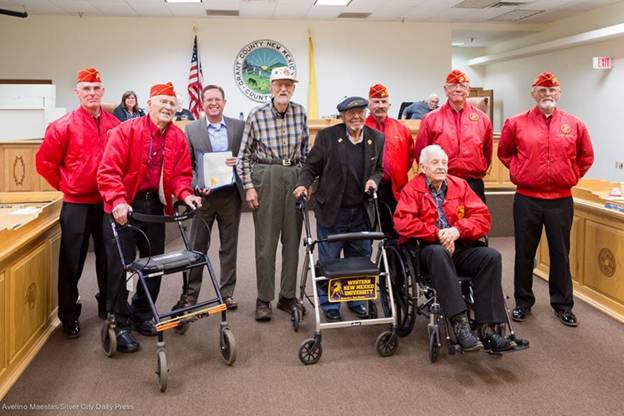
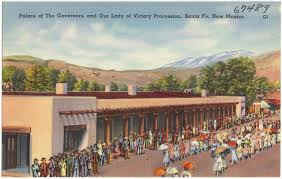
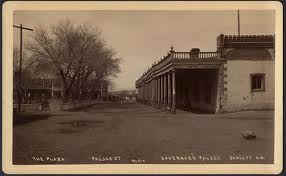
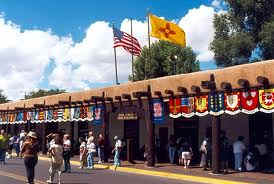




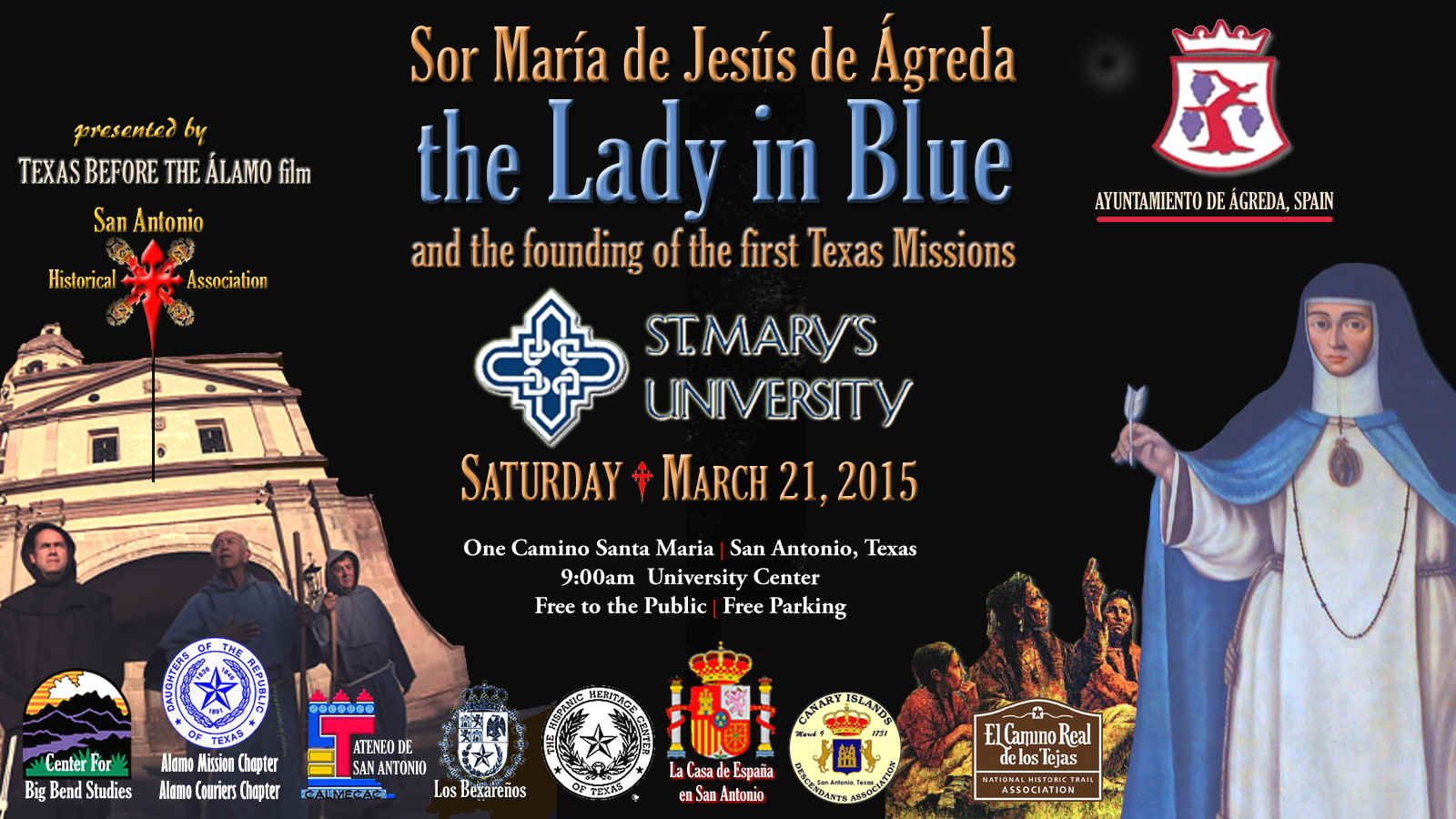
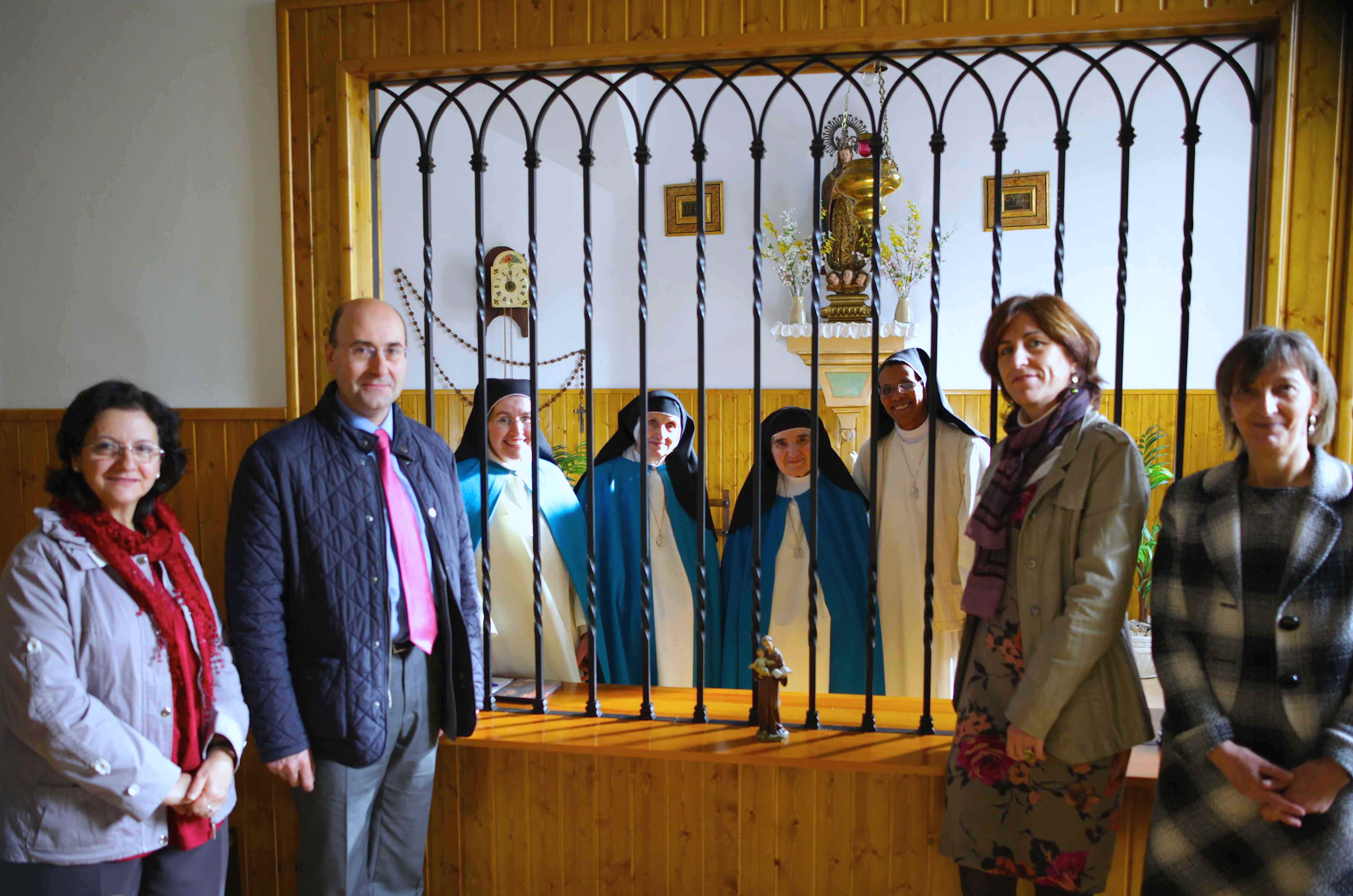
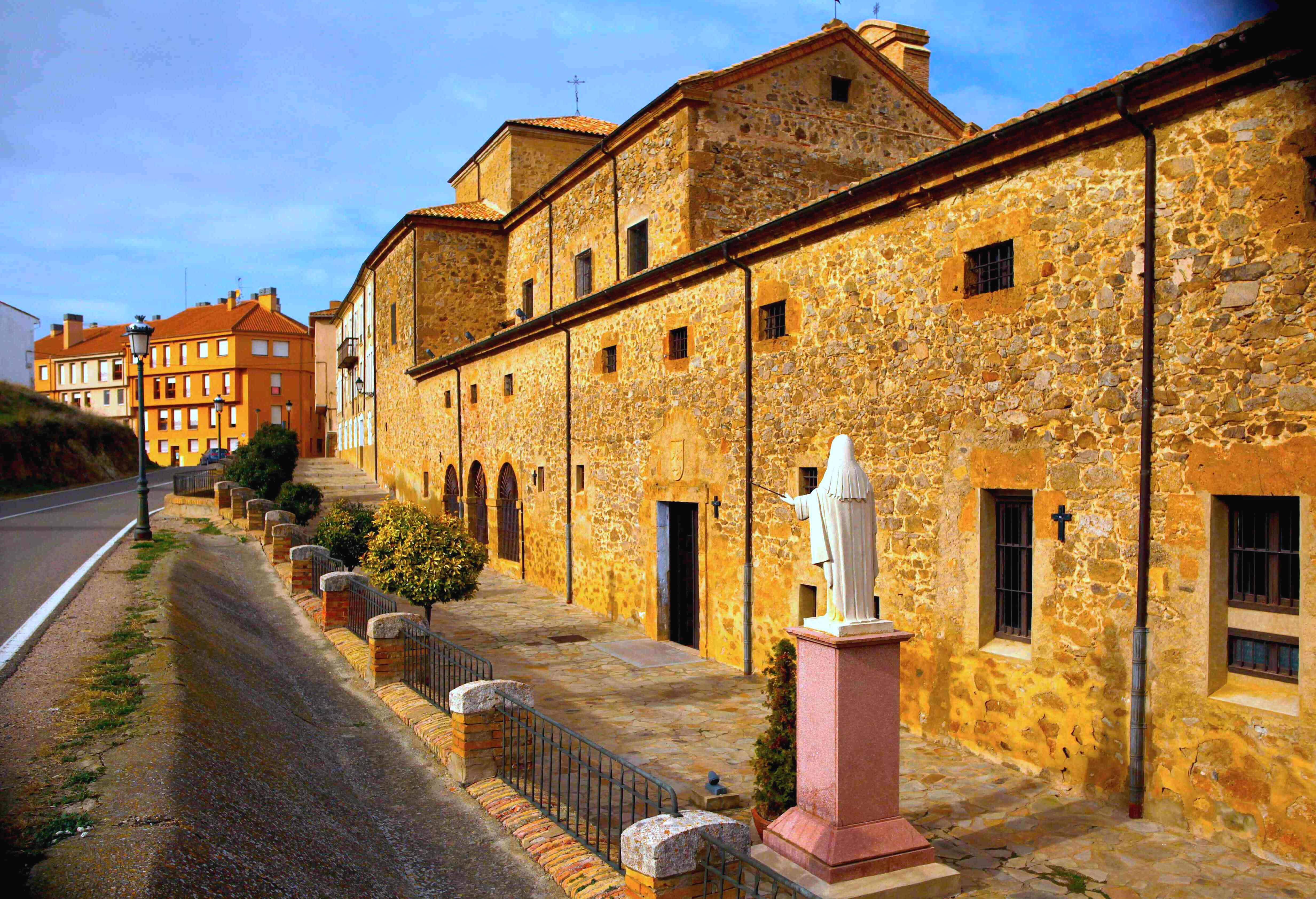
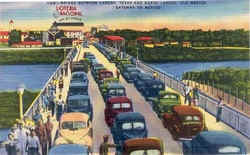
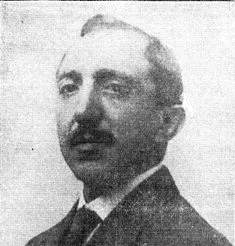 The
railroad solidified Laredo’s lasting importance for transportation to
and from Mexico and contributed significantly to Laredo’s development.
In 1881, Laredo was connected with Corpus Christi by the Texas Mexican
Railroad and San Antonio by the International and Great Northern
Railroad. As the first Texas border city south of Eagle Pass to have a
railroad, Laredo prospered in the late 19th century, especially with the
completion, in 1887, of a railroad connecting Nuevo Laredo with Mexico
City. Laredo became a key stop in a long railroad network of
Mexican-American economic exchange.
The
railroad solidified Laredo’s lasting importance for transportation to
and from Mexico and contributed significantly to Laredo’s development.
In 1881, Laredo was connected with Corpus Christi by the Texas Mexican
Railroad and San Antonio by the International and Great Northern
Railroad. As the first Texas border city south of Eagle Pass to have a
railroad, Laredo prospered in the late 19th century, especially with the
completion, in 1887, of a railroad connecting Nuevo Laredo with Mexico
City. Laredo became a key stop in a long railroad network of
Mexican-American economic exchange.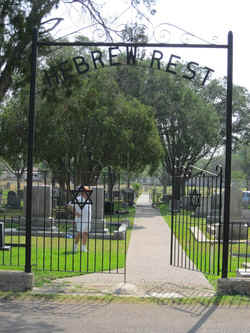 The
Alexanders, one of the most prominent Jewish families in Laredo, also
arrived at the end of the 19th century. Confederate Army veteran Sam
Alexander and his wife Rosa were German immigrants who arrived in Laredo
from Victoria in the 1890s, though it was their sons who contributed
heavily to Laredo’s growth and development. By 1896, their eldest son,
Isaac, owned I. Alexander Clothing Company with his brothers Louis and
William. Isaac, remembered long after his death as a “business genius”
by a local newspaper,
The
Alexanders, one of the most prominent Jewish families in Laredo, also
arrived at the end of the 19th century. Confederate Army veteran Sam
Alexander and his wife Rosa were German immigrants who arrived in Laredo
from Victoria in the 1890s, though it was their sons who contributed
heavily to Laredo’s growth and development. By 1896, their eldest son,
Isaac, owned I. Alexander Clothing Company with his brothers Louis and
William. Isaac, remembered long after his death as a “business genius”
by a local newspaper,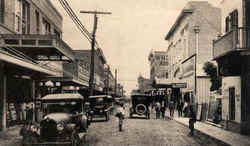 Due
to the leadership of these New York-based rabbis, Laredo Jews
established a congregation, B’nai Israel (“Children of Israel”),
in 1916, with Ferdinand Wormser as president. By 1918, the Jews of
Laredo were holding weekly Shabbat services, though the style of these
services is unclear. The Laredo Timeswrites of high holiday services at
“Congregation B’nai Israel Hall” for Rosh Hashanah in1919, though
the Jews of Laredo almost certainly used rented facilities, such as the
Western Union building or a room above a drug store. By 1919, the Jews
of Laredo had formed a Ladies’ Jewish Aid Society, a cemetery
association, and a Sunday school, organized by Albert Granoff, which was
held in a Laredo public school. Due to the leadership of these New
York-based rabbis, Laredo Jews established a congregation, B’nai
Israel (“Children of Israel”), in 1916, with Ferdinand Wormser as
president. By 1918, the Jews of Laredo were holding weekly Shabbat
services, though the style of these services is unclear. The Laredo
Times writes of high holiday services at “Congregation B’nai Israel
Hall” for Rosh Hashanah in1919, though the Jews of Laredo almost
certainly used rented facilities, such as the Western Union building or
a room above a drug store. By 1919, the Jews of Laredo had formed a
Ladies’ Jewish Aid Society, a cemetery association, and a Sunday
school, organized by Albert Granoff, which was held in a Laredo public
school.
Due
to the leadership of these New York-based rabbis, Laredo Jews
established a congregation, B’nai Israel (“Children of Israel”),
in 1916, with Ferdinand Wormser as president. By 1918, the Jews of
Laredo were holding weekly Shabbat services, though the style of these
services is unclear. The Laredo Timeswrites of high holiday services at
“Congregation B’nai Israel Hall” for Rosh Hashanah in1919, though
the Jews of Laredo almost certainly used rented facilities, such as the
Western Union building or a room above a drug store. By 1919, the Jews
of Laredo had formed a Ladies’ Jewish Aid Society, a cemetery
association, and a Sunday school, organized by Albert Granoff, which was
held in a Laredo public school. Due to the leadership of these New
York-based rabbis, Laredo Jews established a congregation, B’nai
Israel (“Children of Israel”), in 1916, with Ferdinand Wormser as
president. By 1918, the Jews of Laredo were holding weekly Shabbat
services, though the style of these services is unclear. The Laredo
Times writes of high holiday services at “Congregation B’nai Israel
Hall” for Rosh Hashanah in1919, though the Jews of Laredo almost
certainly used rented facilities, such as the Western Union building or
a room above a drug store. By 1919, the Jews of Laredo had formed a
Ladies’ Jewish Aid Society, a cemetery association, and a Sunday
school, organized by Albert Granoff, which was held in a Laredo public
school.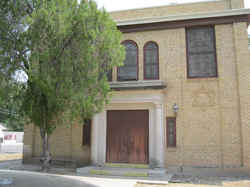 Another
example of the blending of Jewish and Mexican culture on the American
border can be seen in the family of Israel Goldberg. Goldberg, a native
of Lithuania, traveled from Europe to Tampico, arriving in Nuevo Laredo
by 1929. He eventually became a Mexican citizen and immigrated to the
United States in 1946. In 1947, Goldberg took over his brother Nathan’s
Army and Navy Surplus store. Goldberg was advised to adopt a more common
Mexican name to help his business, so Israel Goldberg became “Don Raul”
Goldberg and his store became “Casa Raul.” In 2011, the store
remained in business, run by Raul’s daughter Evelyn Selig and her two
brothers, Moses and Henry Goldberg.
Another
example of the blending of Jewish and Mexican culture on the American
border can be seen in the family of Israel Goldberg. Goldberg, a native
of Lithuania, traveled from Europe to Tampico, arriving in Nuevo Laredo
by 1929. He eventually became a Mexican citizen and immigrated to the
United States in 1946. In 1947, Goldberg took over his brother Nathan’s
Army and Navy Surplus store. Goldberg was advised to adopt a more common
Mexican name to help his business, so Israel Goldberg became “Don Raul”
Goldberg and his store became “Casa Raul.” In 2011, the store
remained in business, run by Raul’s daughter Evelyn Selig and her two
brothers, Moses and Henry Goldberg.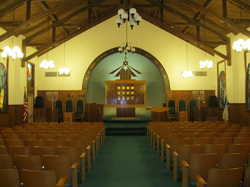 In
1924 the congregation once again discussed the building of a synagogue
though they avoided the question of religious ritual. The group
eventually purchased a plot of land, though they had not yet made a
decision about the religious affiliation of the congregation. In a
tenuous sign of unity, the two groups collaborated for high holiday
services in the 1920s, renting the same building though holding separate
services. The Orthodox group held services first, followed by the Reform
group. However, according to Albert Granoff, the collaboration drew the
groups further apart, as the Orthodox group was intolerant of Reform
practices while the Orthodox customs were misunderstood by the Reform
congregants. One year in the late 1920s, the Reform group brought
down student rabbi Aaron Lefkowitz from Hebrew Union College in
Cincinnati and held separate services in the American Legion Hall.
Laredo’s Jewish community had split over religious lines. Despite this
conflict over religious rituals, Laredo Jews worked together in B’nai
B’rith, with members from both factions serving in leadership
positions with the local chapter.
In
1924 the congregation once again discussed the building of a synagogue
though they avoided the question of religious ritual. The group
eventually purchased a plot of land, though they had not yet made a
decision about the religious affiliation of the congregation. In a
tenuous sign of unity, the two groups collaborated for high holiday
services in the 1920s, renting the same building though holding separate
services. The Orthodox group held services first, followed by the Reform
group. However, according to Albert Granoff, the collaboration drew the
groups further apart, as the Orthodox group was intolerant of Reform
practices while the Orthodox customs were misunderstood by the Reform
congregants. One year in the late 1920s, the Reform group brought
down student rabbi Aaron Lefkowitz from Hebrew Union College in
Cincinnati and held separate services in the American Legion Hall.
Laredo’s Jewish community had split over religious lines. Despite this
conflict over religious rituals, Laredo Jews worked together in B’nai
B’rith, with members from both factions serving in leadership
positions with the local chapter.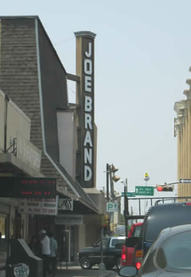
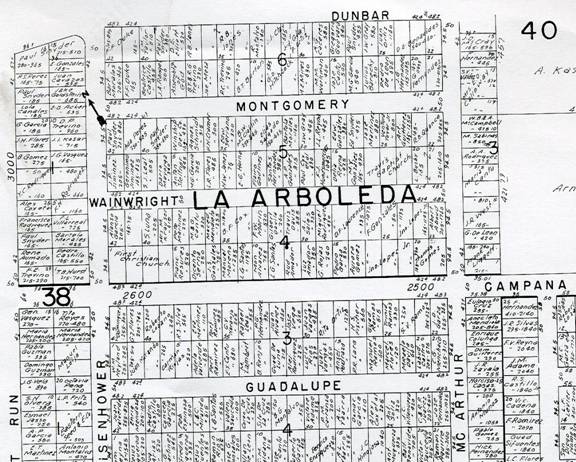
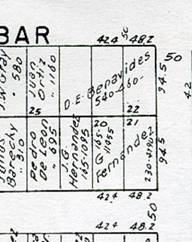
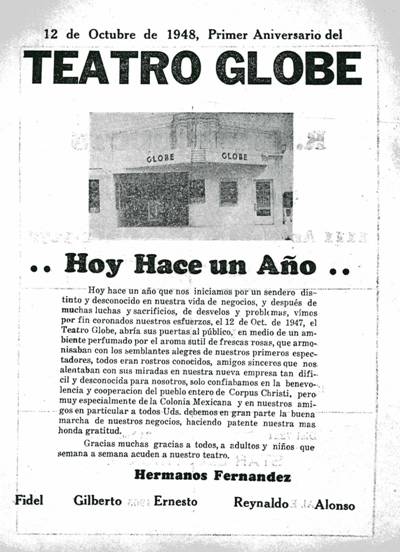 When the theater opened its doors in
1947, it introduced the Fernandez family to a new and exciting daily
adventure which consumed the time of my Grandmother Mama Lolita’s
family.
When the theater opened its doors in
1947, it introduced the Fernandez family to a new and exciting daily
adventure which consumed the time of my Grandmother Mama Lolita’s
family.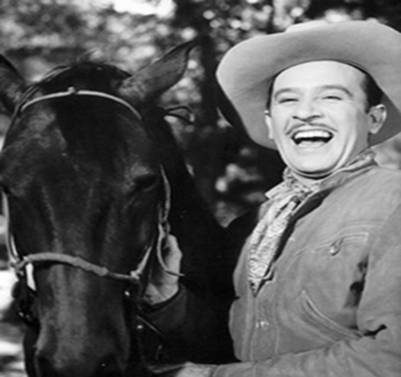 idel
was in charge of selling tickets, but sometimes Ofelia Segura or cousin
Dolores Fernandez assisted.
idel
was in charge of selling tickets, but sometimes Ofelia Segura or cousin
Dolores Fernandez assisted.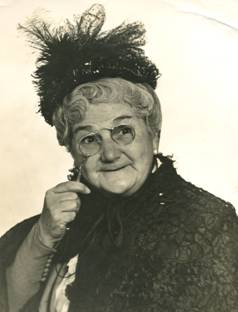
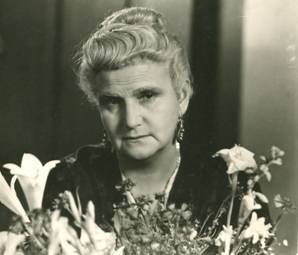
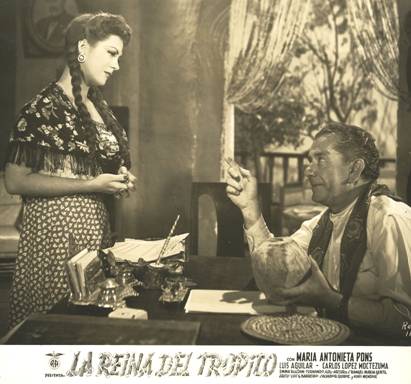
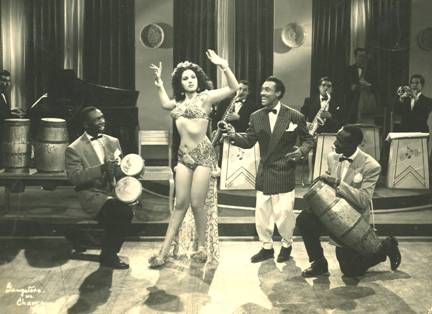
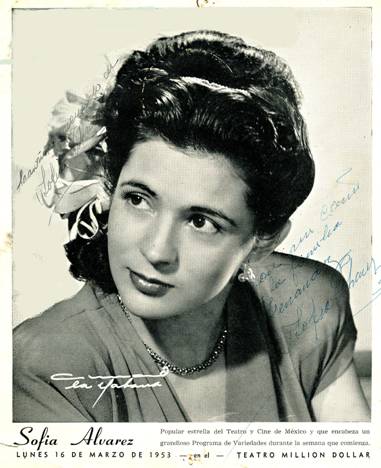
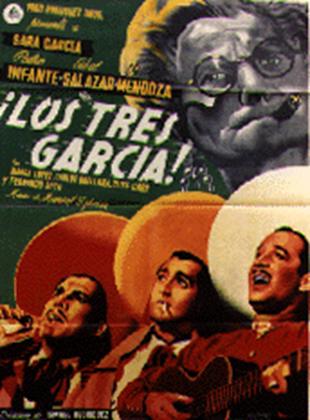
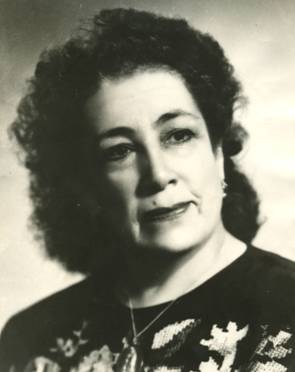
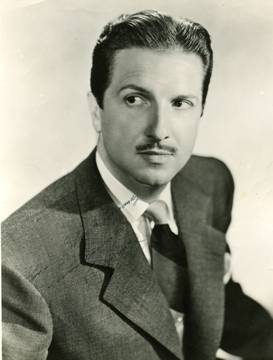
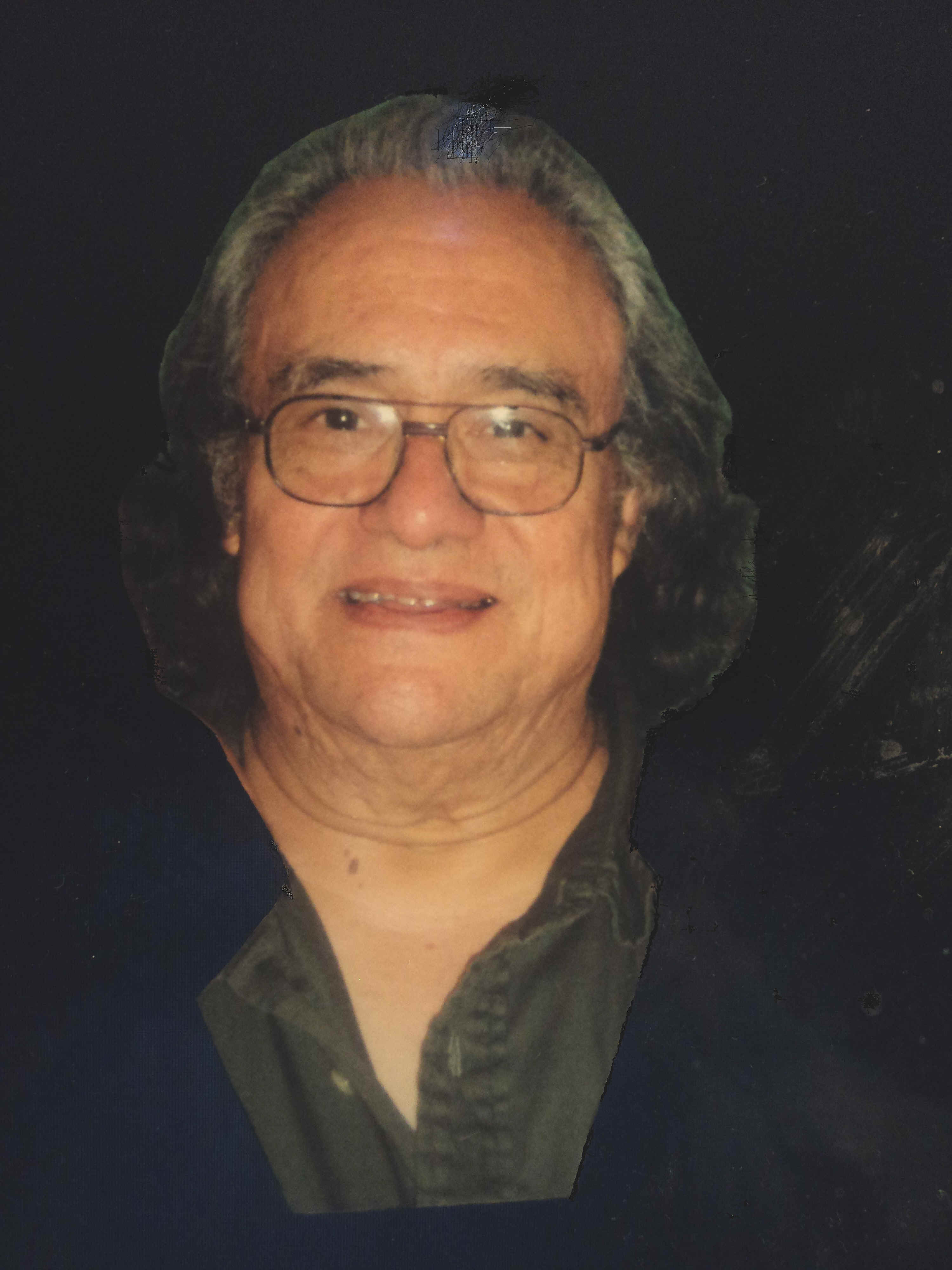 One day (a long time ago—in the
pre-Internet era) I was a graduate student at the University of Michigan
at Ann Arbor chipping away at my master’s degree in social studies
education, and so one day I went to what was then called the UofM
Graduate Library which was in the middle of the campus. I had gone there
to explore what I was told might be a source of data on the demographics
of Michigan prior to 1900. One librarian told me that perhaps I might
therefore want to look at the census data contained in the volumes (i.e.
dusty old books) of census data in the attic area of the UofM Graduate
Library.
One day (a long time ago—in the
pre-Internet era) I was a graduate student at the University of Michigan
at Ann Arbor chipping away at my master’s degree in social studies
education, and so one day I went to what was then called the UofM
Graduate Library which was in the middle of the campus. I had gone there
to explore what I was told might be a source of data on the demographics
of Michigan prior to 1900. One librarian told me that perhaps I might
therefore want to look at the census data contained in the volumes (i.e.
dusty old books) of census data in the attic area of the UofM Graduate
Library.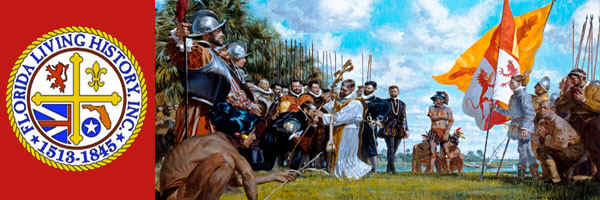
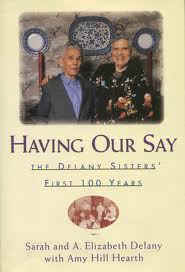
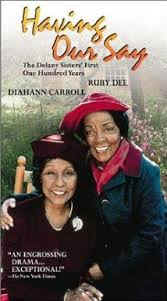
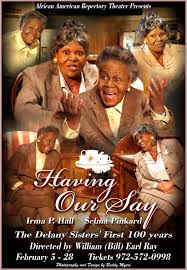
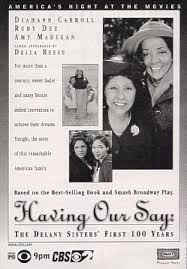
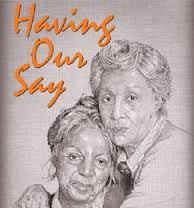
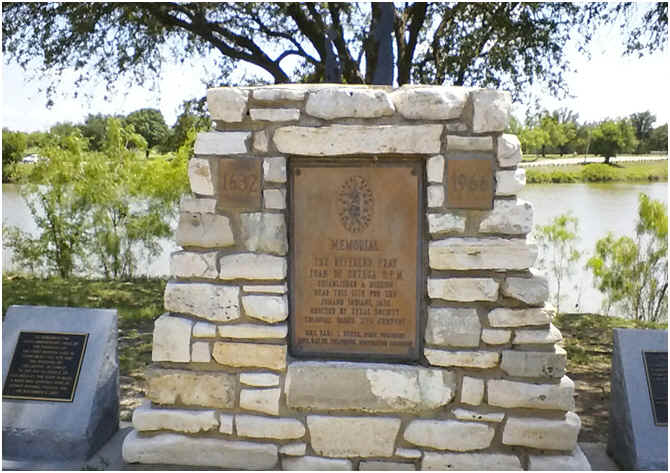
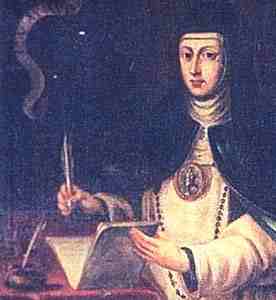
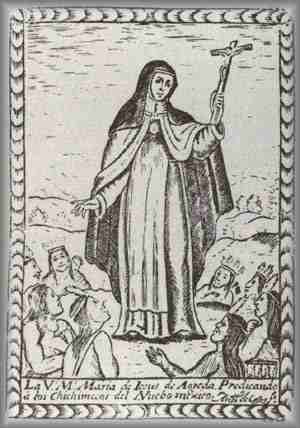
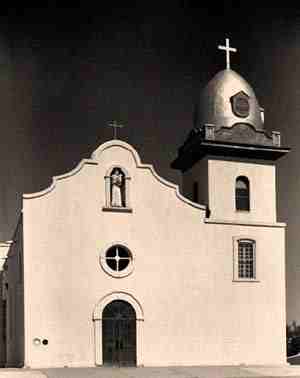
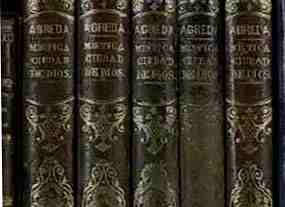
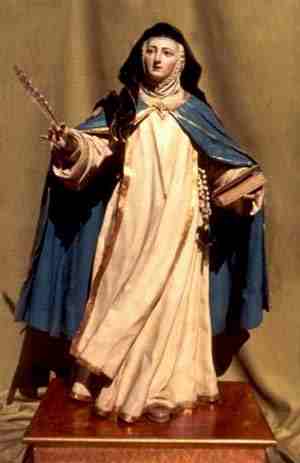
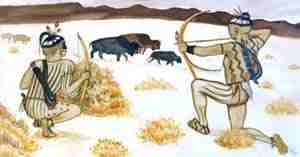 Mary
of Agreda obediently told the three priests all that concerned her
visits to the Indians of America. Since she was a child, she said, she
had been inspired to pray for the Indians in New Spain, whose souls
would be lost unless they converted to the one true Faith.
Mary
of Agreda obediently told the three priests all that concerned her
visits to the Indians of America. Since she was a child, she said, she
had been inspired to pray for the Indians in New Spain, whose souls
would be lost unless they converted to the one true Faith.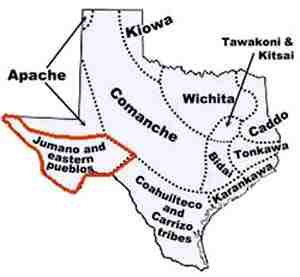
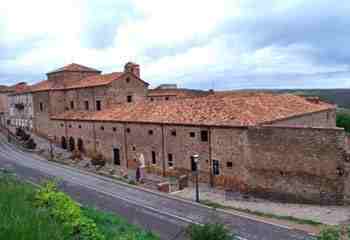 Hearing
the words of Mother Mary of Jesus, the missionary priest was much moved.
To verify the truth of her account, he asked her specific questions
about the area, if she could identify certain landmarks and describe the
other missionaries, as well as specific Indians. “She told me many
particularities of that land that even I had forgotten and she brought
them to my memory,” he noted. She also described the features and
individual traits of the missionaries and various Indians, with details
that only a person who had been in New Spain could know.
Hearing
the words of Mother Mary of Jesus, the missionary priest was much moved.
To verify the truth of her account, he asked her specific questions
about the area, if she could identify certain landmarks and describe the
other missionaries, as well as specific Indians. “She told me many
particularities of that land that even I had forgotten and she brought
them to my memory,” he noted. She also described the features and
individual traits of the missionaries and various Indians, with details
that only a person who had been in New Spain could know.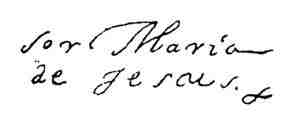
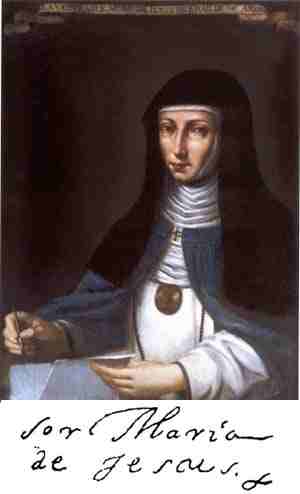
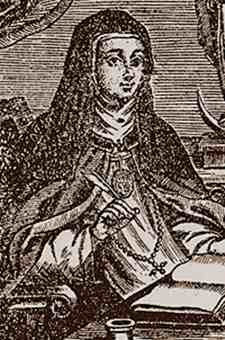
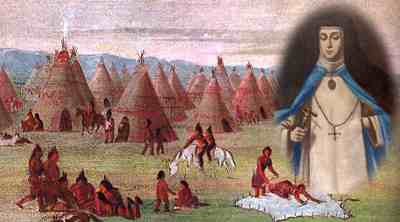
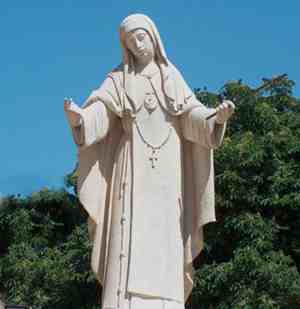

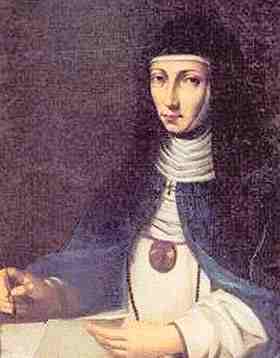
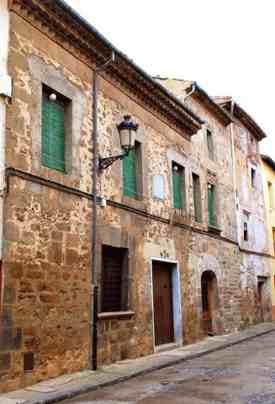
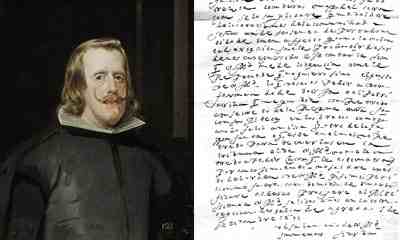
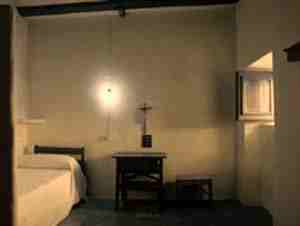
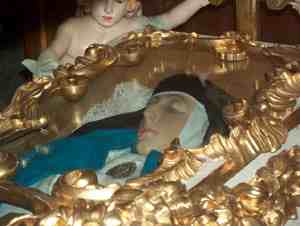

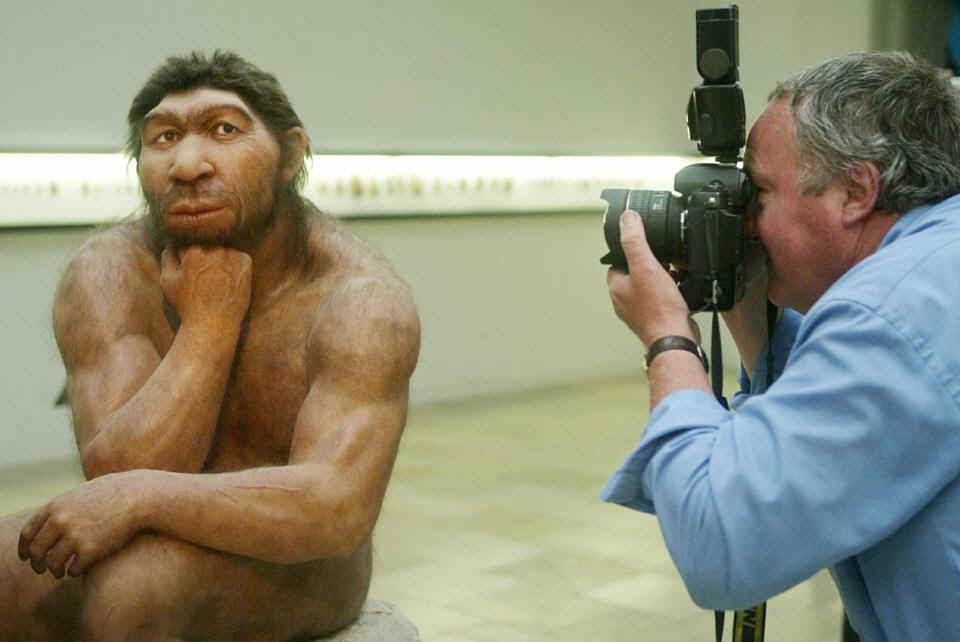
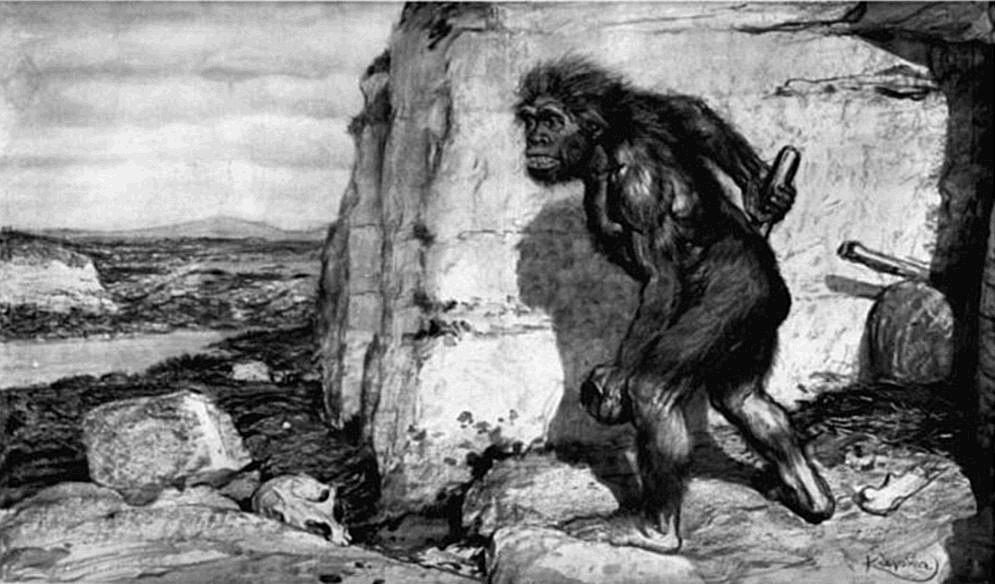 “We used to have a very derogatory view of the abilities of Neanderthals,” Shipman said. “But the more we look at what’s going on, the more sophistication there is and the more subtlety there is.” With new scientific tools, the fields of archeology and paleoanthropology have advanced far beyond simply examining artifacts. Scholars can now study Neanderthals’ metabolic energy expenditures and investigate their diets by analyzing bone chemistry. Many long-discovered archeological sites are now undergoing re-dating using more precise methods than those available in the 20th century; that, too, is leading to new insights and information on how and when humans and Neanderthals might have interacted.
“We used to have a very derogatory view of the abilities of Neanderthals,” Shipman said. “But the more we look at what’s going on, the more sophistication there is and the more subtlety there is.” With new scientific tools, the fields of archeology and paleoanthropology have advanced far beyond simply examining artifacts. Scholars can now study Neanderthals’ metabolic energy expenditures and investigate their diets by analyzing bone chemistry. Many long-discovered archeological sites are now undergoing re-dating using more precise methods than those available in the 20th century; that, too, is leading to new insights and information on how and when humans and Neanderthals might have interacted.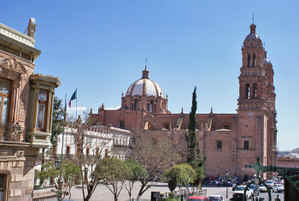 From
the time I arrived with my friend Clara to meet Javier in this state
capital city of 125,000 until the moment she and I reluctantly drove out
of town, we were delighted by everything we experienced in Zacatecas.
Three days were not nearly enough time to really savor its Colonial
pleasures. The simple 4-hour drive northeast from Guadalajara to
Zacatecas makes this trip one that we can repeat often—and we
certainly want to go again soon.
From
the time I arrived with my friend Clara to meet Javier in this state
capital city of 125,000 until the moment she and I reluctantly drove out
of town, we were delighted by everything we experienced in Zacatecas.
Three days were not nearly enough time to really savor its Colonial
pleasures. The simple 4-hour drive northeast from Guadalajara to
Zacatecas makes this trip one that we can repeat often—and we
certainly want to go again soon.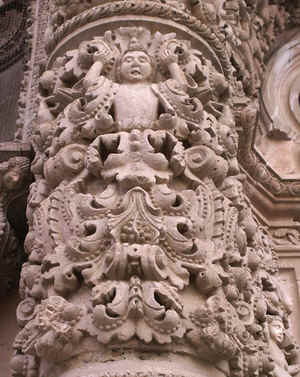
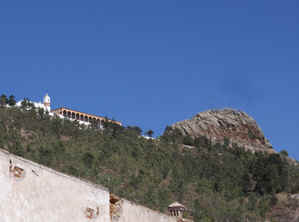
 The
Pedro Coronel Museum is named for one of the foremost Mexican
painters and sculptors of the 20th Century, and a zacatecano. The
massive and eclectic art collection of this older Coronel brother
(1923-1985), is housed in a huge colonial building which has been at
various times in its history a Jesuit college, a Dominican convent,
early military headquarters, and a jail. Room leads to room, and each is
filled with treasures.
The
Pedro Coronel Museum is named for one of the foremost Mexican
painters and sculptors of the 20th Century, and a zacatecano. The
massive and eclectic art collection of this older Coronel brother
(1923-1985), is housed in a huge colonial building which has been at
various times in its history a Jesuit college, a Dominican convent,
early military headquarters, and a jail. Room leads to room, and each is
filled with treasures.
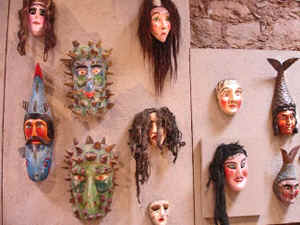 The Francisco
Goitia Museum is housed in the state governor's former mansion,
located a longish walk or short cab ride from the historic center of the
city. Two huge rooms of the museum house works by Zacatecas artists
Julio Ruelas, Pedro and Rafael Coronel, Manuel Felguérez and others.
Another illustrious zacatecano, Francisco Goitia (1882-1960) has been
compared to the best European painters. Several downstairs rooms are
devoted to Goitia's haunting paintings. Up-and-coming younger Mexican
artists are often invited to exhibit in the second floor rooms.
The Francisco
Goitia Museum is housed in the state governor's former mansion,
located a longish walk or short cab ride from the historic center of the
city. Two huge rooms of the museum house works by Zacatecas artists
Julio Ruelas, Pedro and Rafael Coronel, Manuel Felguérez and others.
Another illustrious zacatecano, Francisco Goitia (1882-1960) has been
compared to the best European painters. Several downstairs rooms are
devoted to Goitia's haunting paintings. Up-and-coming younger Mexican
artists are often invited to exhibit in the second floor rooms.
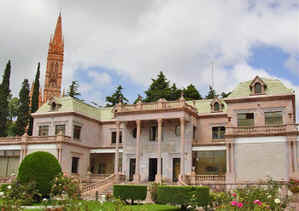
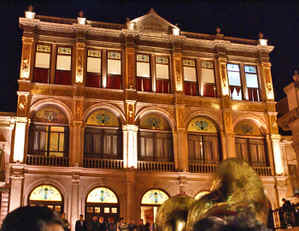
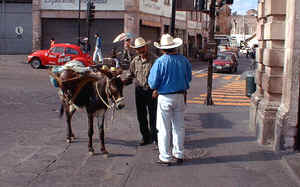
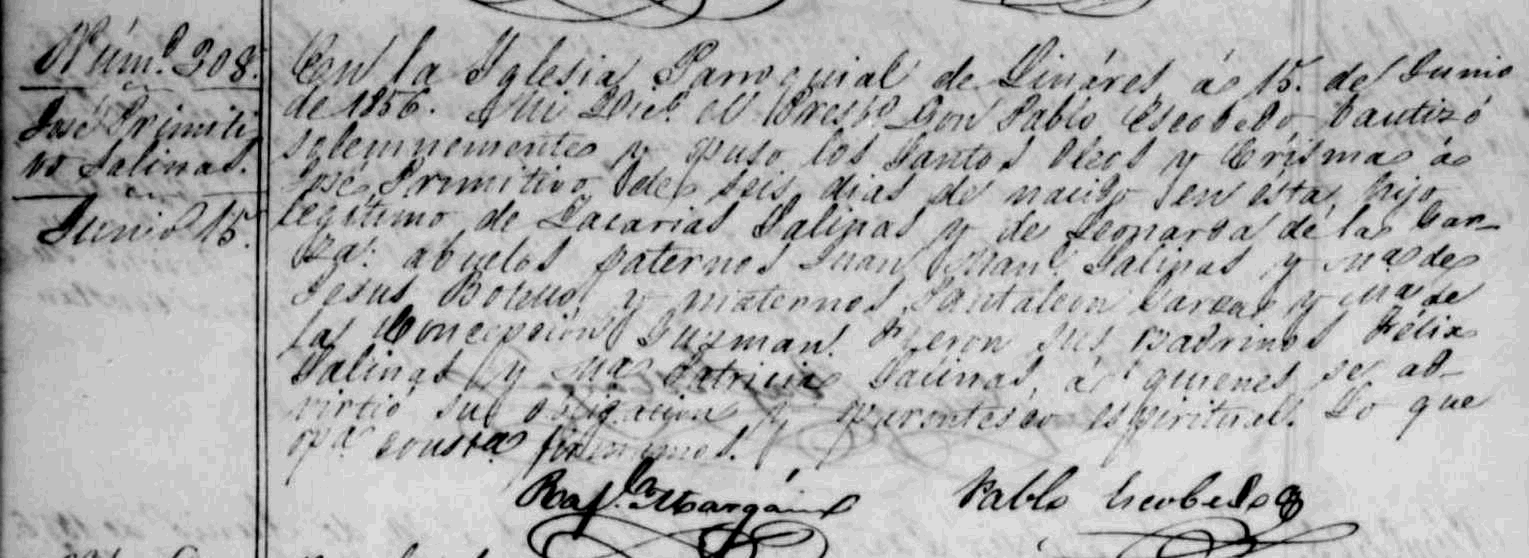
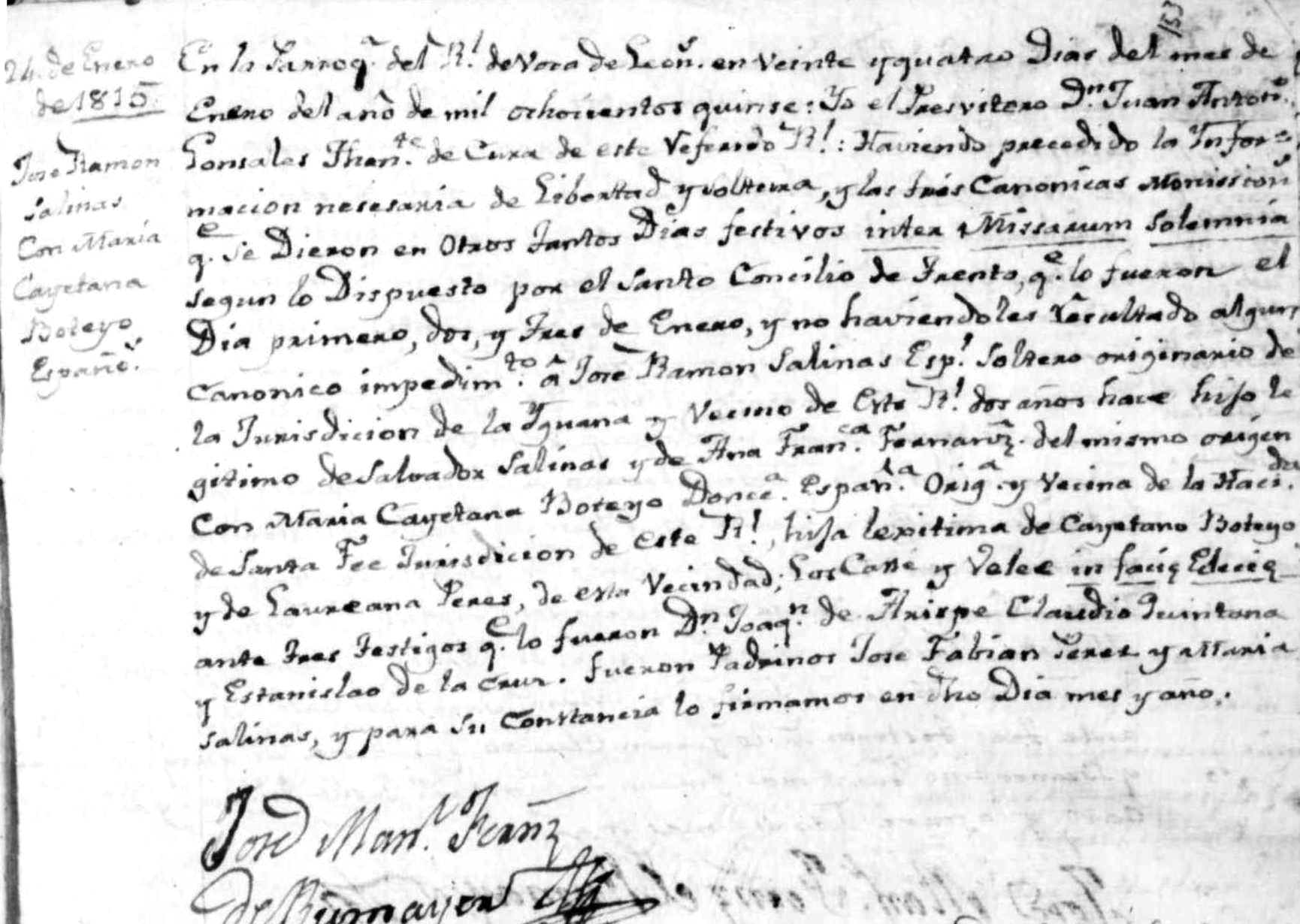
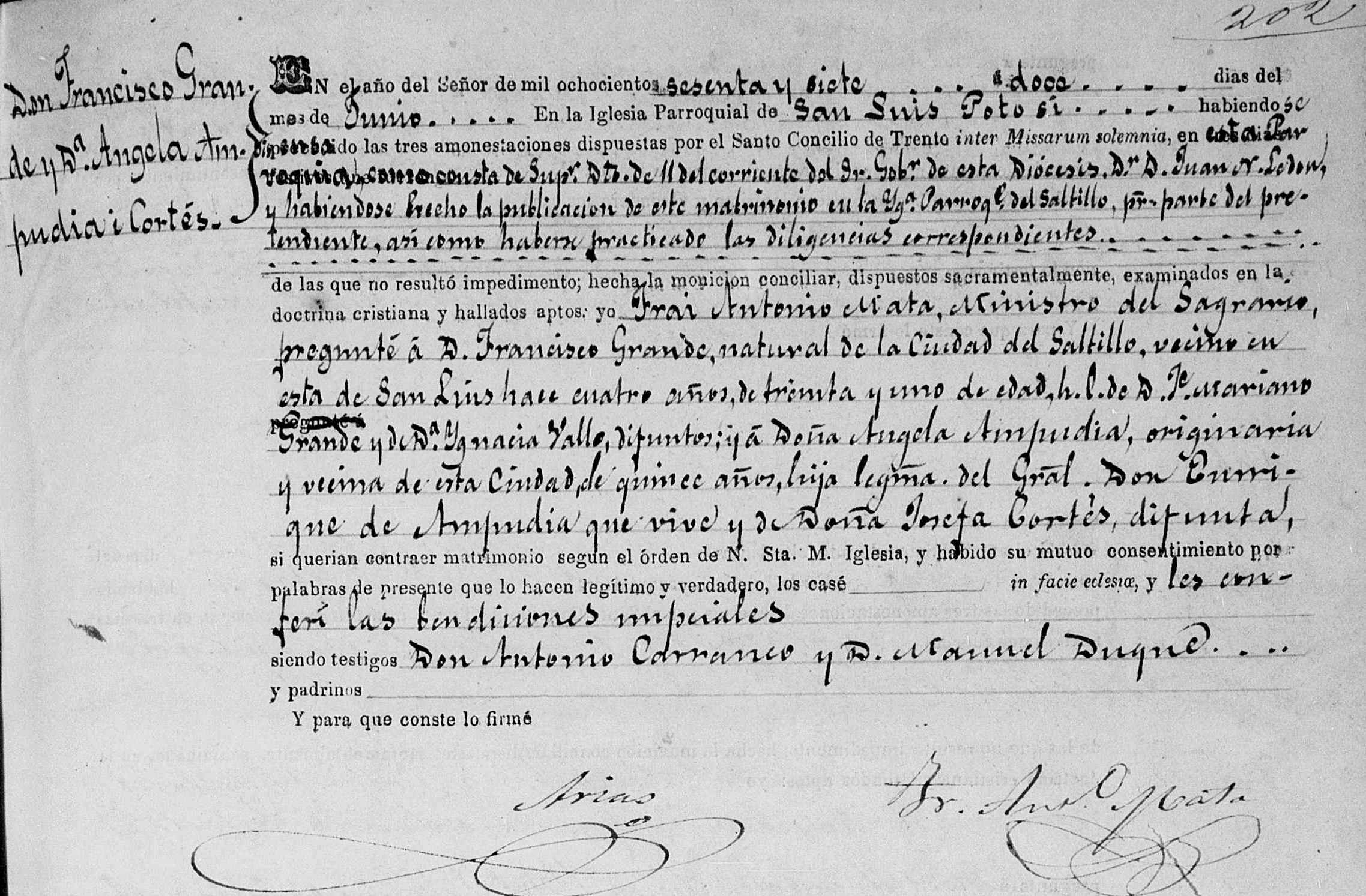
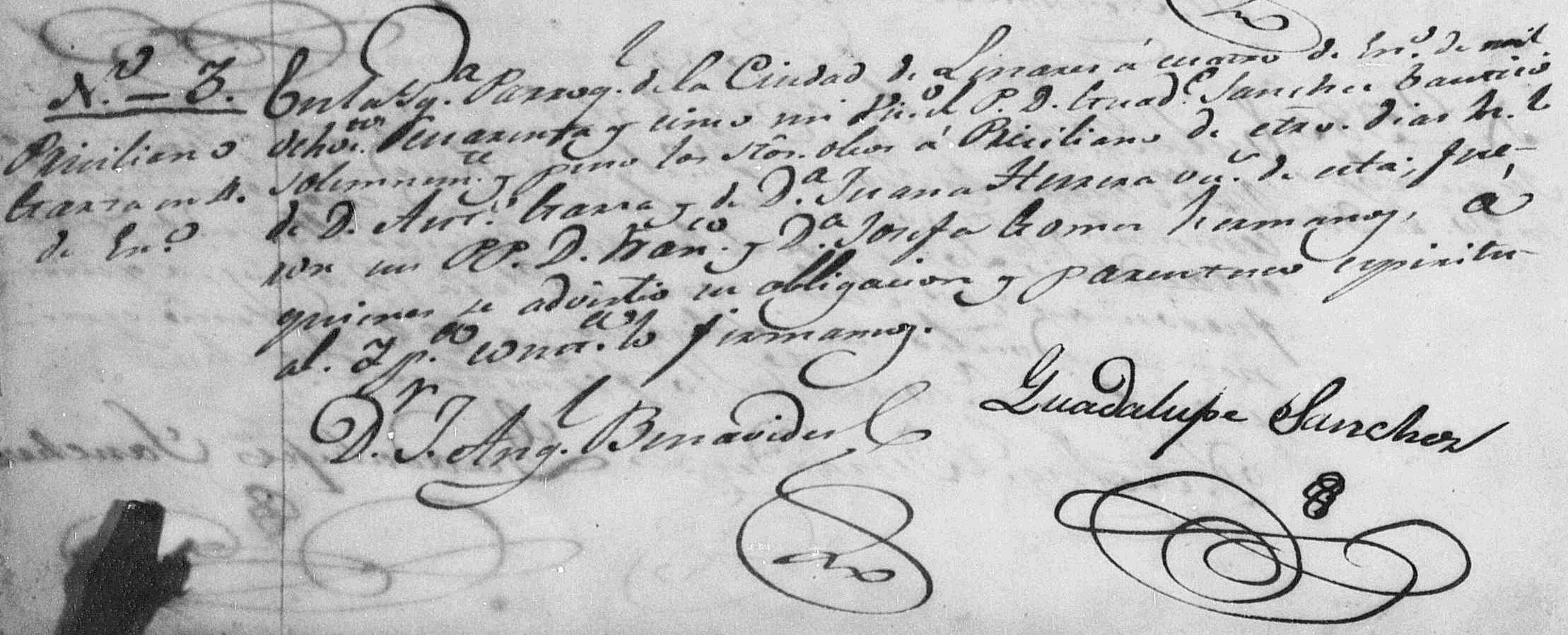
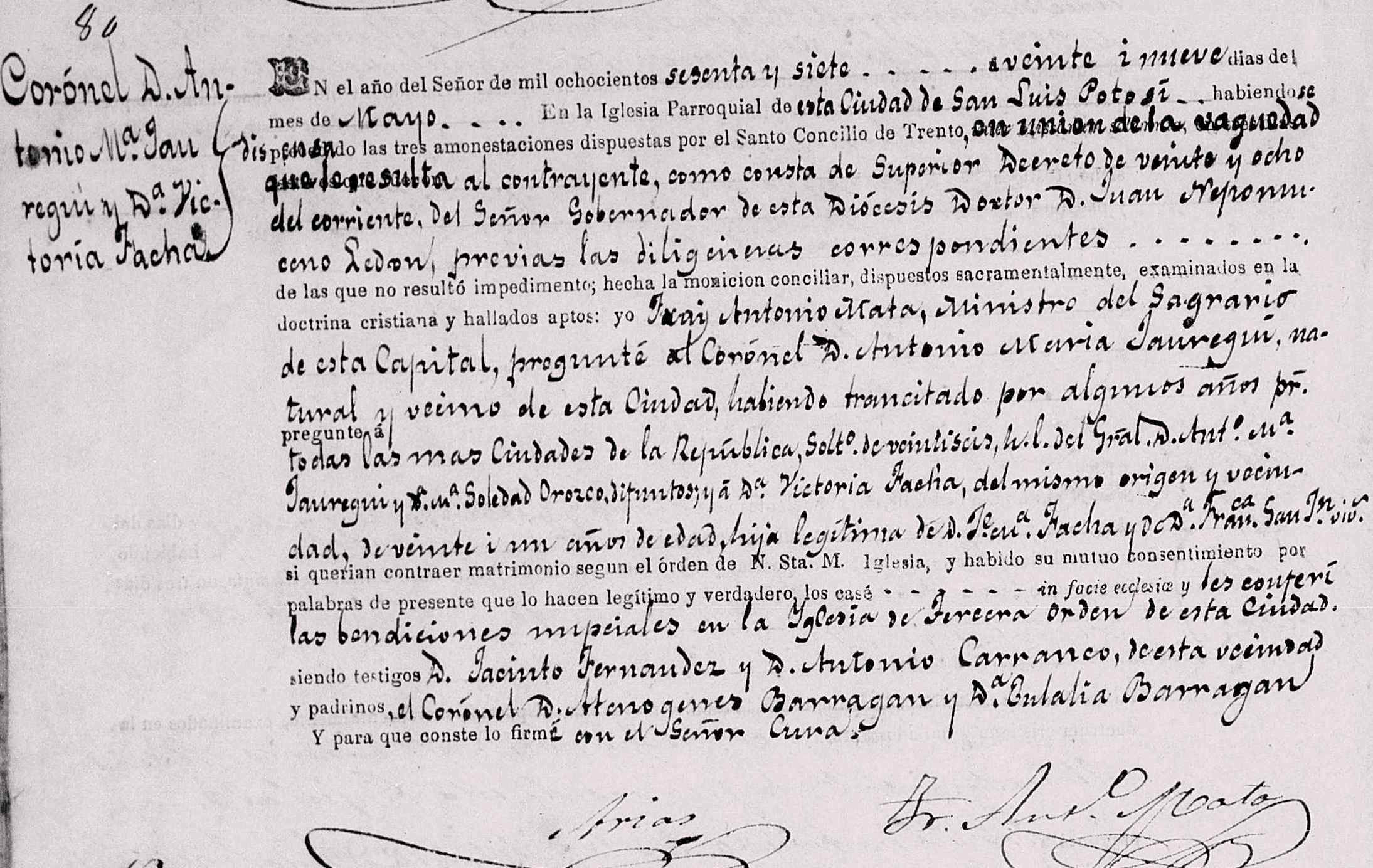
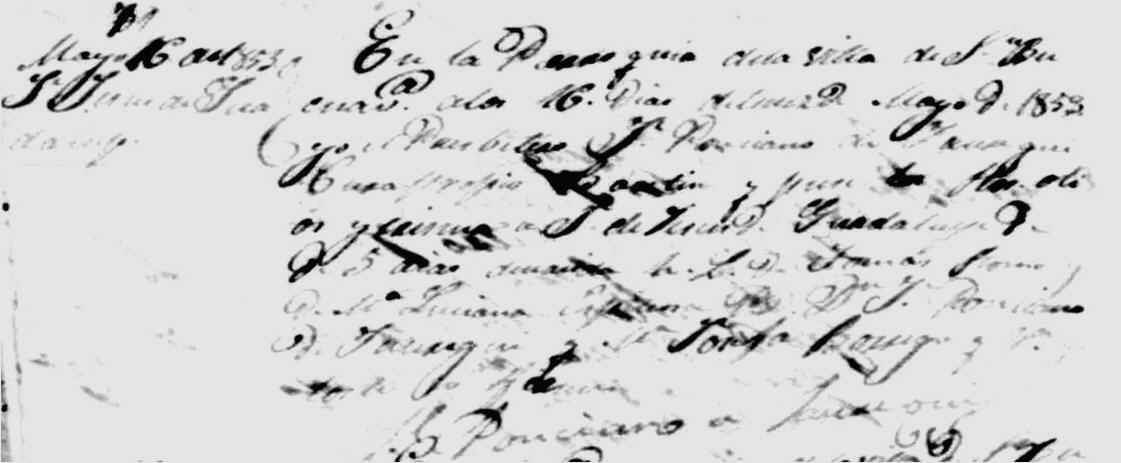

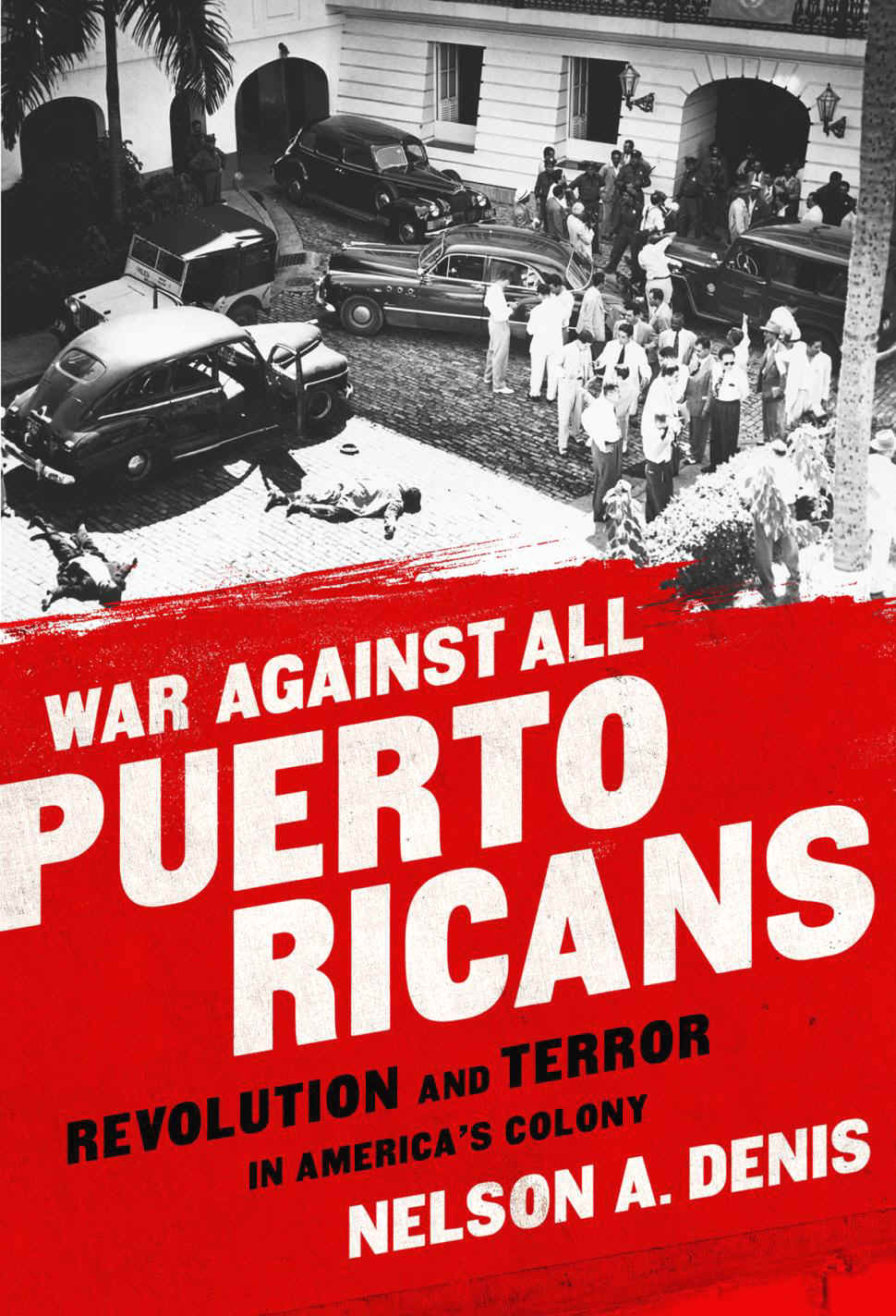
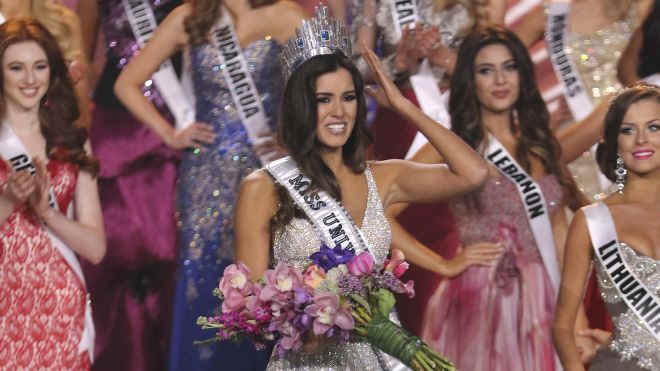
 Ángel
Custodio. Aunque quizás usted no lo conozca, hay un pequeño principado
en medio del Atlántico que tiene una curiosa historia y que os contaré
tal como yo la he conocido.
Ángel
Custodio. Aunque quizás usted no lo conozca, hay un pequeño principado
en medio del Atlántico que tiene una curiosa historia y que os contaré
tal como yo la he conocido.